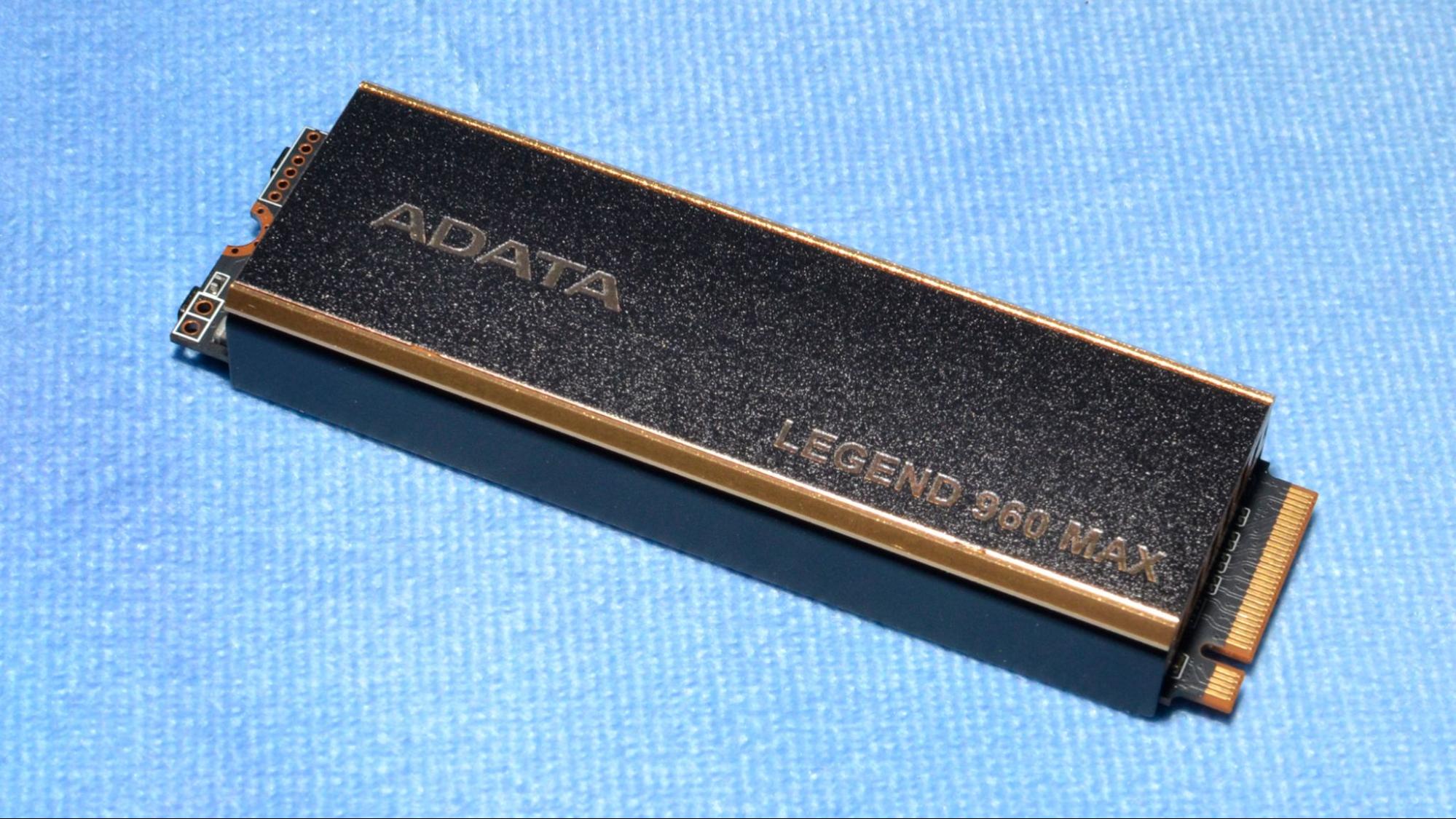
The Adata Legend 960 Max is another common PCIe 4.0 NVMe SSD for your PS5 or desktop PC, with the added advantage of a heatsink to keep things cool. Overall, it’s a Legend 960 in disguise, simply with an added heatsink, but this works well with the drive’s chemistry. Although it sets no real records, the ability to write for a long time while keeping cool could make this drive interesting for some uses. However, it faces stiff competition, so it has to be priced right to be meaningful.
Specifications
The Adata Legend 960 Max, as with the original Legend 960, comes in 1TB, 2TB, or 4TB flavors. During the time of review the prices dropped on these to $84.99, $169.99, and $369.99, respectively. This pricing feels a bit high at 1TB with heatsinked drives like the Lexar Professional NM800 Pro around and there’s fair competition at 2TB, too. At 4TB the Legend 960 Max is reasonable for a high-end PCIe 4.0 SSD if you want a svelte heatsink, possibly for PlayStation 5 use, but the WD Black SN850X is otherwise attractive.
The Legend 960 Max reaches up to 7,400 MBps / 6,800 MBps for sequential reads and writes and up to 750,000 / 630,000 IOPS for random reads and rights. TBW is at 780TB per TB of capacity and the drive is backed by a five-year warranty.
Software and Accessories
Adata provides a download for its SSD Toolbox software package. This application has drive information, diagnostics, cloning, TRIM optimization, a firmware updater, and the ability to perform a secure erase.
A Closer Look
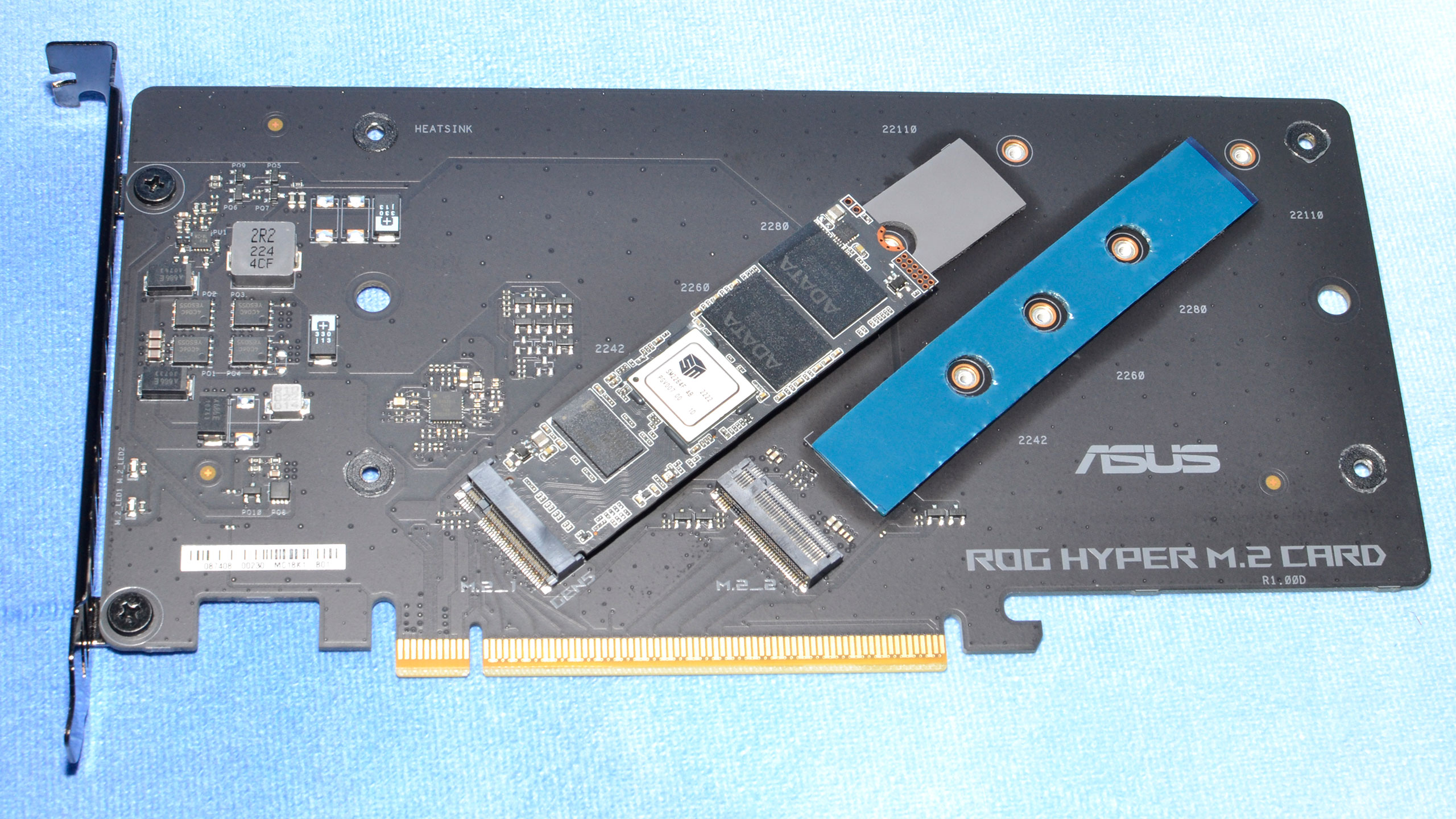
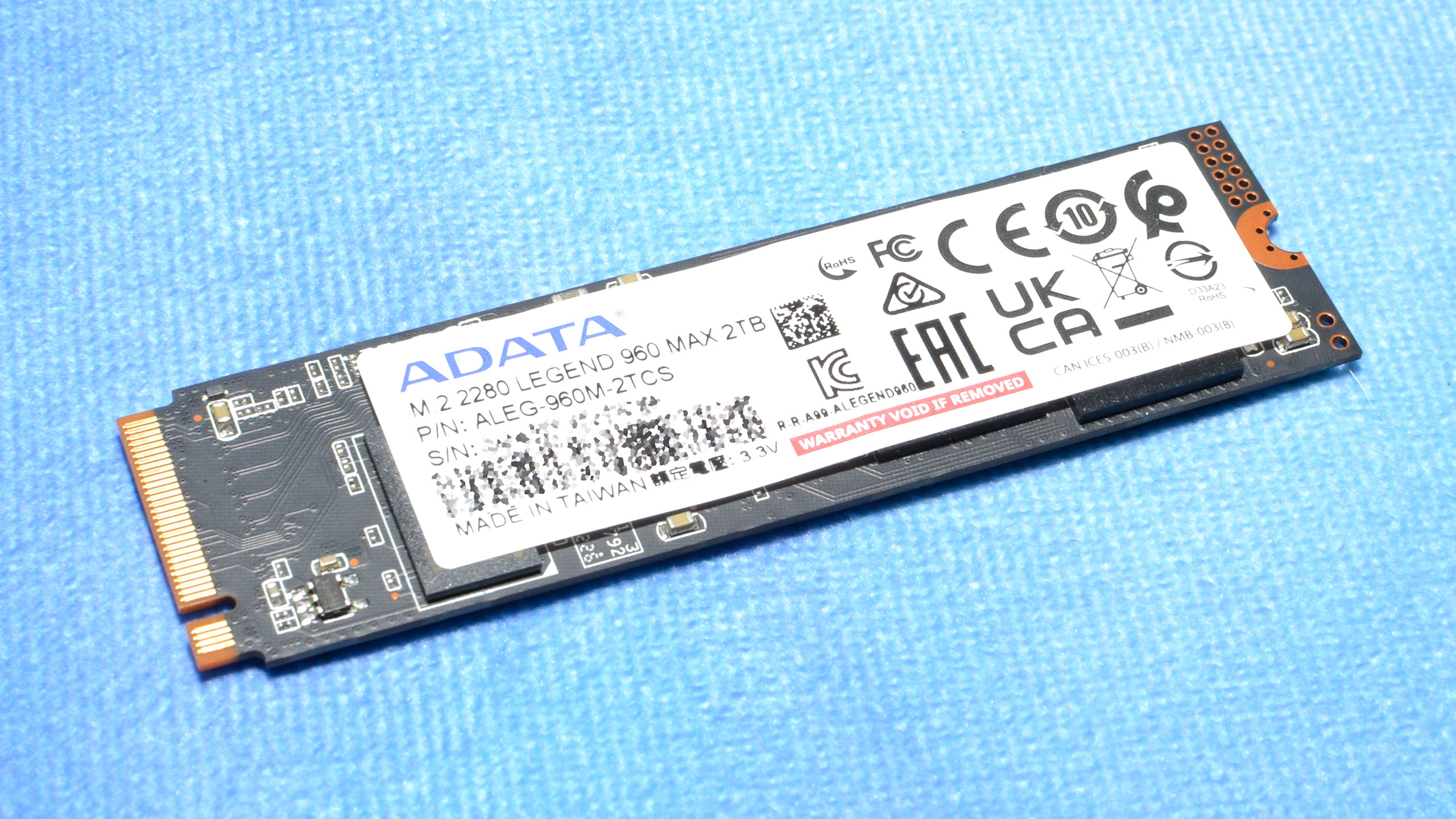
The Legend 960 Max is quite similar to the original Legend 960 with the primary change being the addition of a full-fledged heatsink. This is a nice addition as the original drive could get quite hot during sustained workloads. It’s possible to add your own heatsink or to use a motherboard heatsink on the original, although currently these drives are priced similarly. What we spot otherwise is a double-sided drive with one DRAM and two NAND packages on either side, with the controller centralized on the top side.
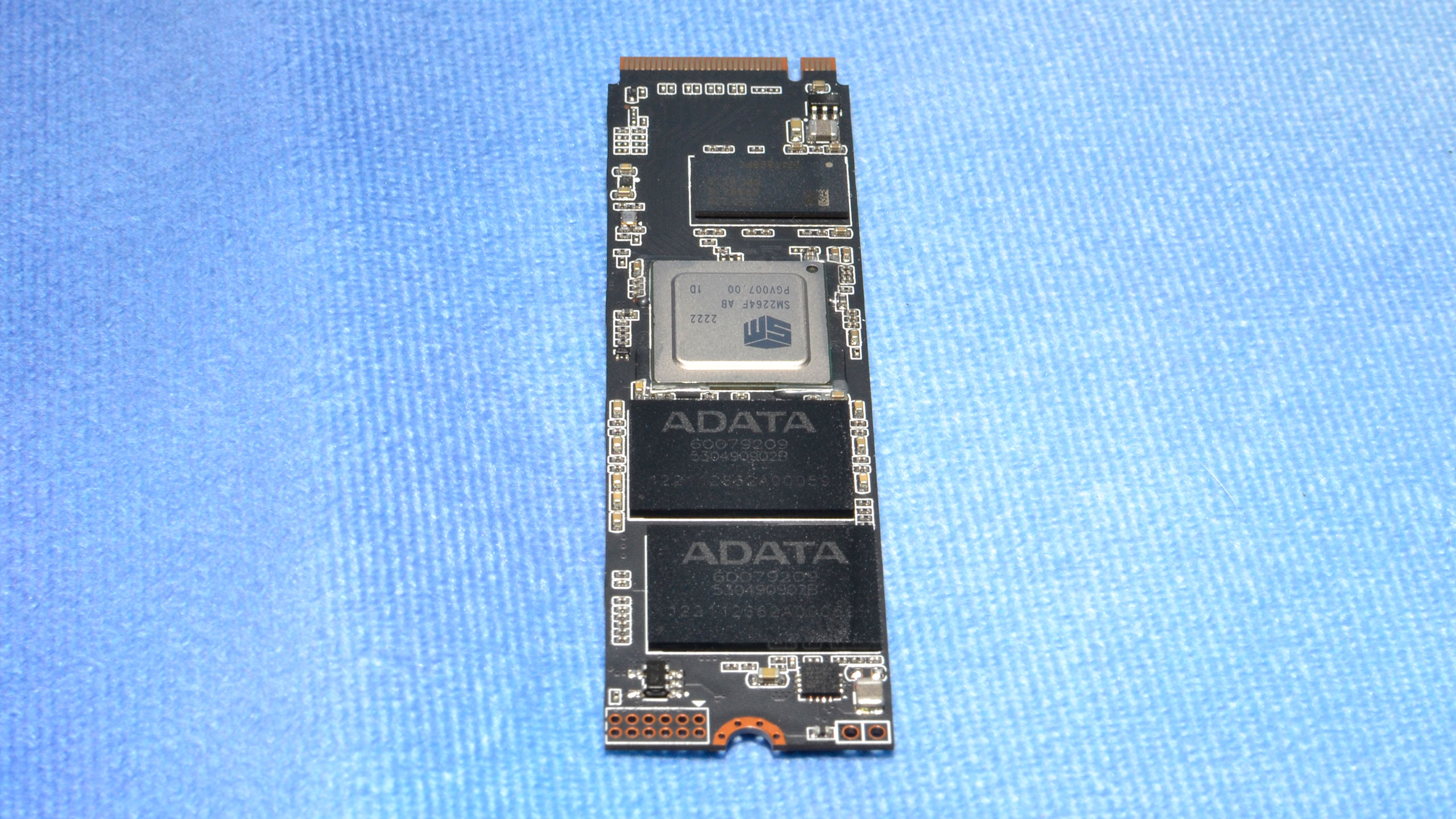
The Legend 960 Max uses the same controller and DDR4 as the Legend 960. There’s plenty of DRAM and the controller has proven itself capable, but not exceptional. SMI was a little late to the market this time around.
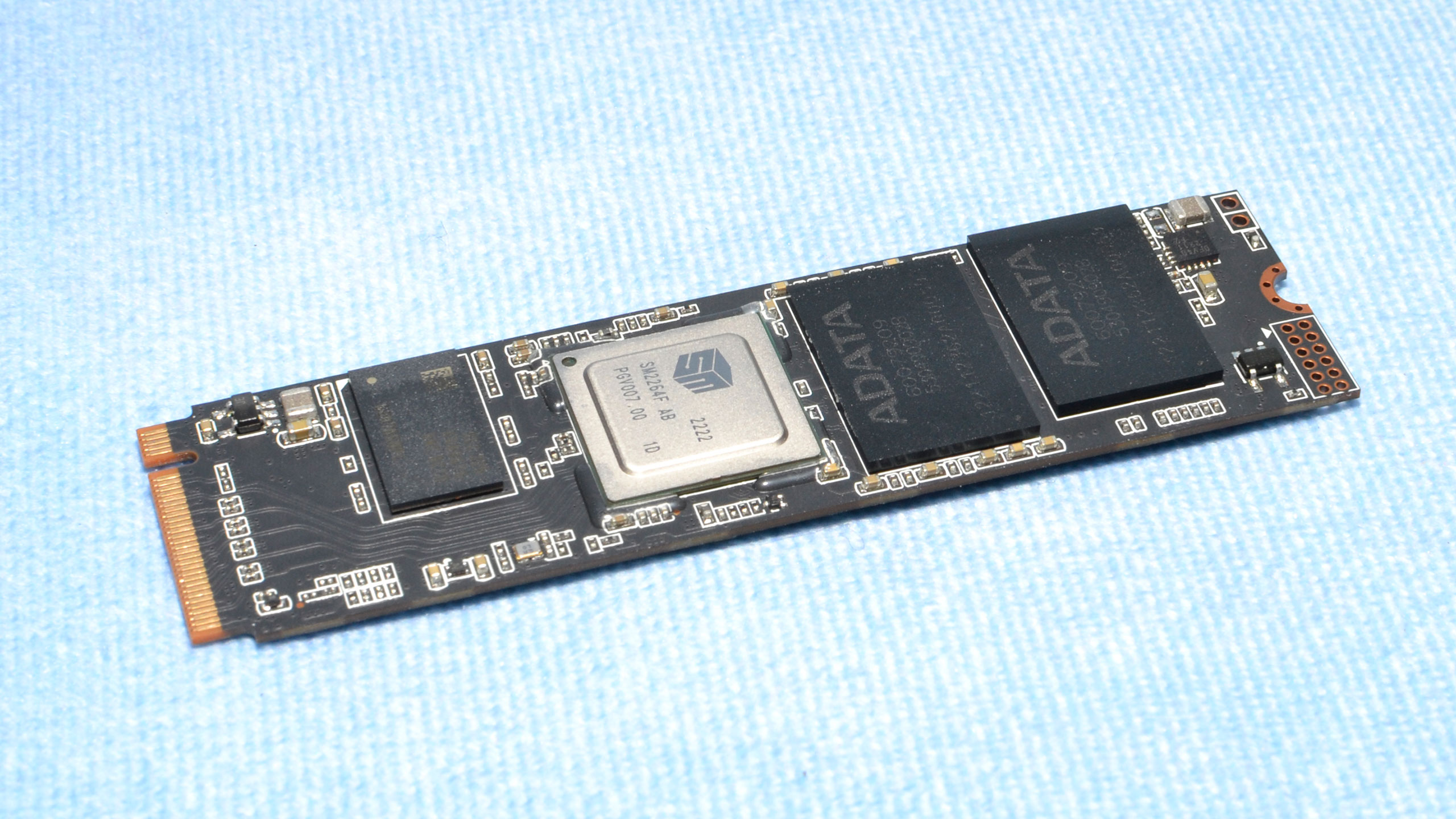
The flash is Micron’s ubiquitous 176-Layer TLC, or B47R. In time we expect Micron’s 232-Layer design to become more common, particularly on higher-end drives. This includes a range of upcoming PCIe 5.0 SSDs. That flash has twice the typical density of B47R, which promises to help kick capacity up a notch.
MORE: Best SSDs
MORE: Best External SSDs and Hard Drives
MORE: How We Test HDDs And SSDs
MORE: All SSD Content
Comparison Products
The 2TB Adata Legend 960 Max is up against some of the best drives we’ve tested. Our comparison list includes the Samsung 990 Pro, the Solidigm P44 Pro, the Sabrent Rocket 4 Plus-G, the Adata Legend 960, the Acer Predator GM7000, the Corsair MP600 Pro LPX, the Sabrent Rocket 4.0, and the Gigabyte Aorus 7000s. The Rocket 4.0 is the odd one out here, being from the original crop of PCIe 4.0 SSDs designed for the X570 launch. The Aorus 7000s is using a fully-fledged 4.0 controller but was from the time of older Micron flash.
Trace Testing - 3DMark Storage Benchmark
Built for gamers, 3DMark’s Storage Benchmark focuses on real-world gaming performance. Each round in this benchmark stresses storage based on gaming activities including loading games, saving progress, installing game files, and recording gameplay video streams.
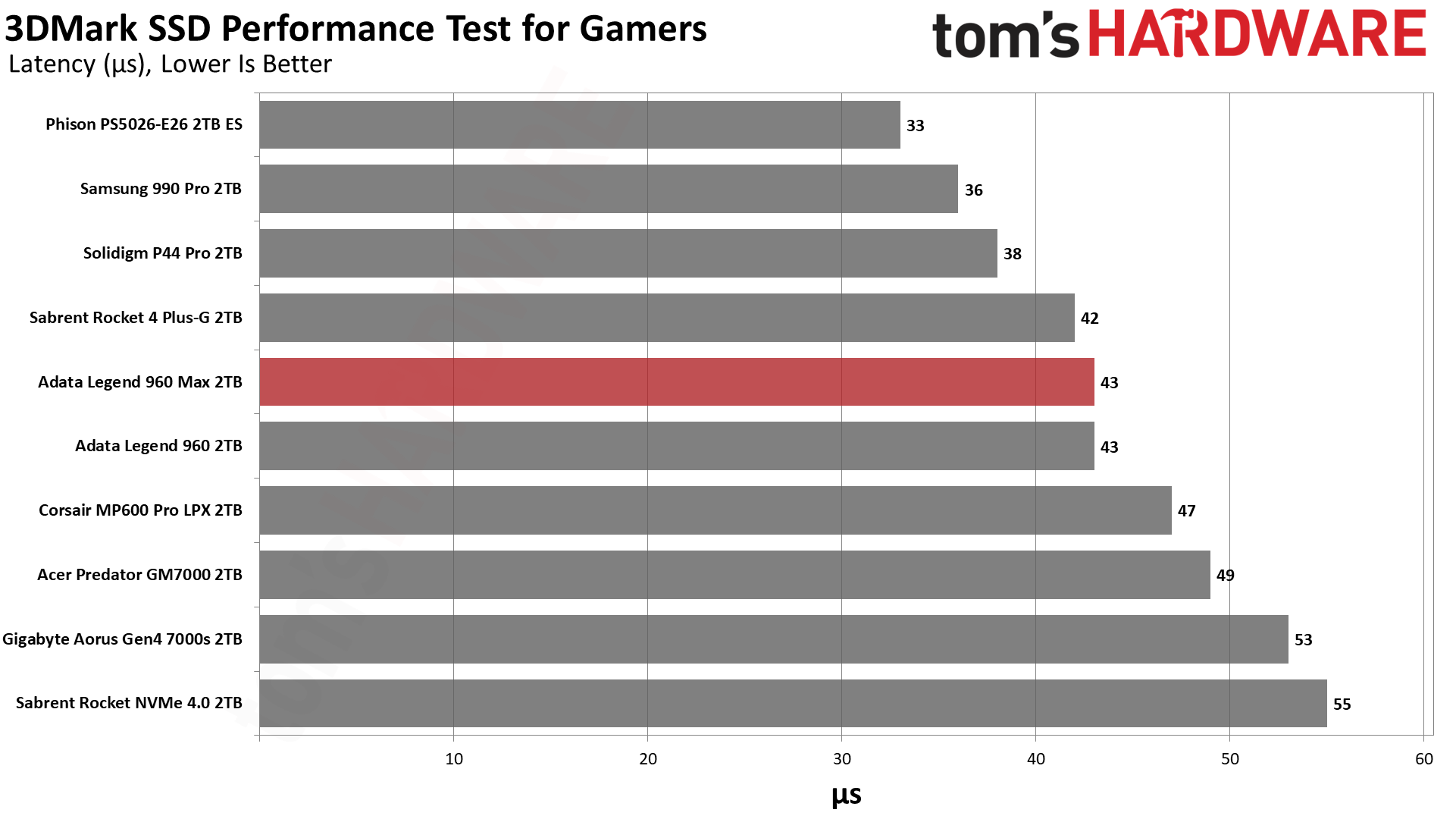
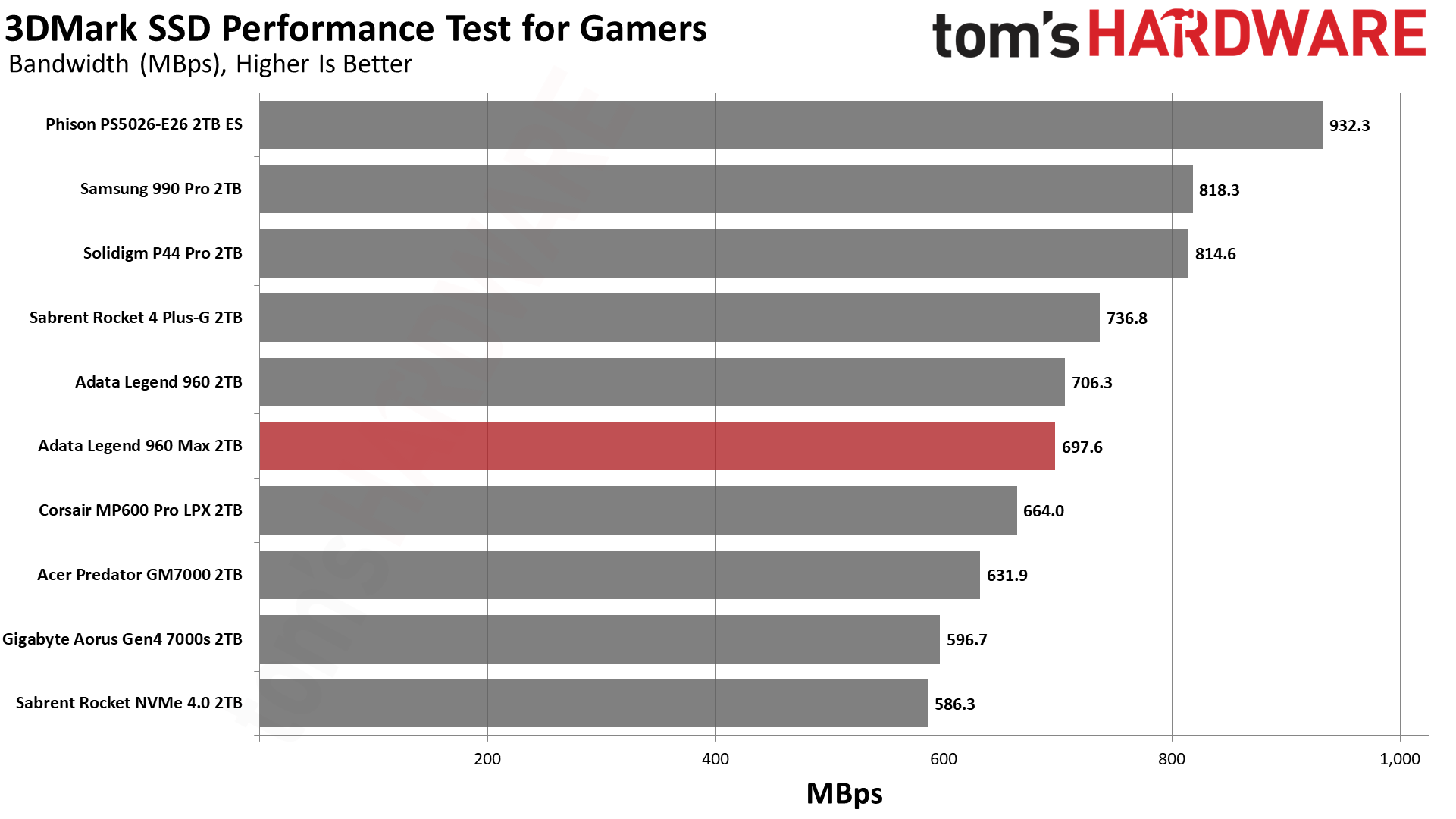
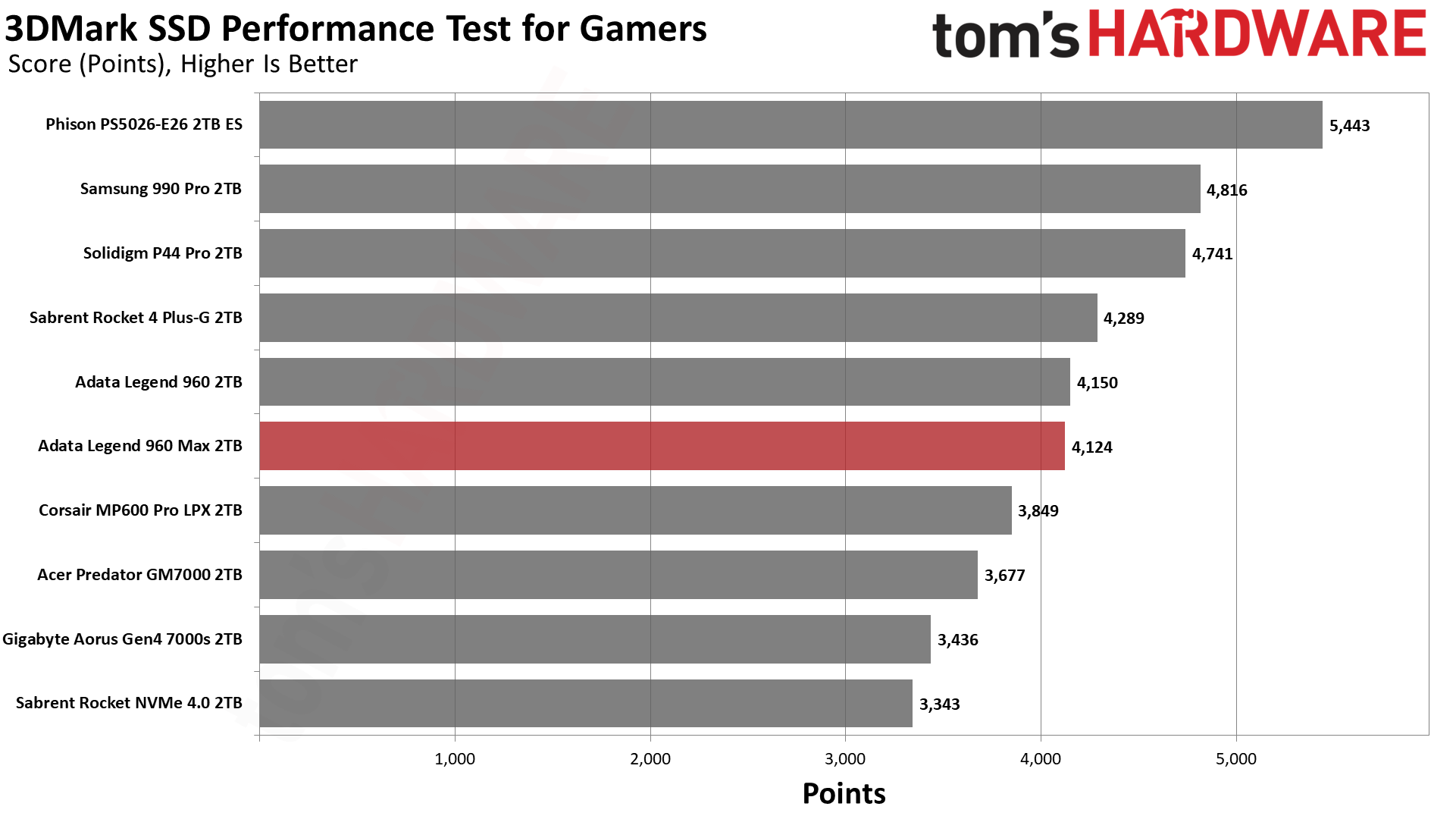
The Legend 960 Max is average in 3DMark and, as anticipated, the same as the original 960. This is “good enough” performance but suggests this drive must be cheaper than better offerings like the P44 Pro.
Trace Testing – PCMark 10 Storage Benchmark
PCMark 10 is a trace-based benchmark that uses a wide-ranging set of real-world traces from popular applications and everyday tasks to measure the performance of storage devices.
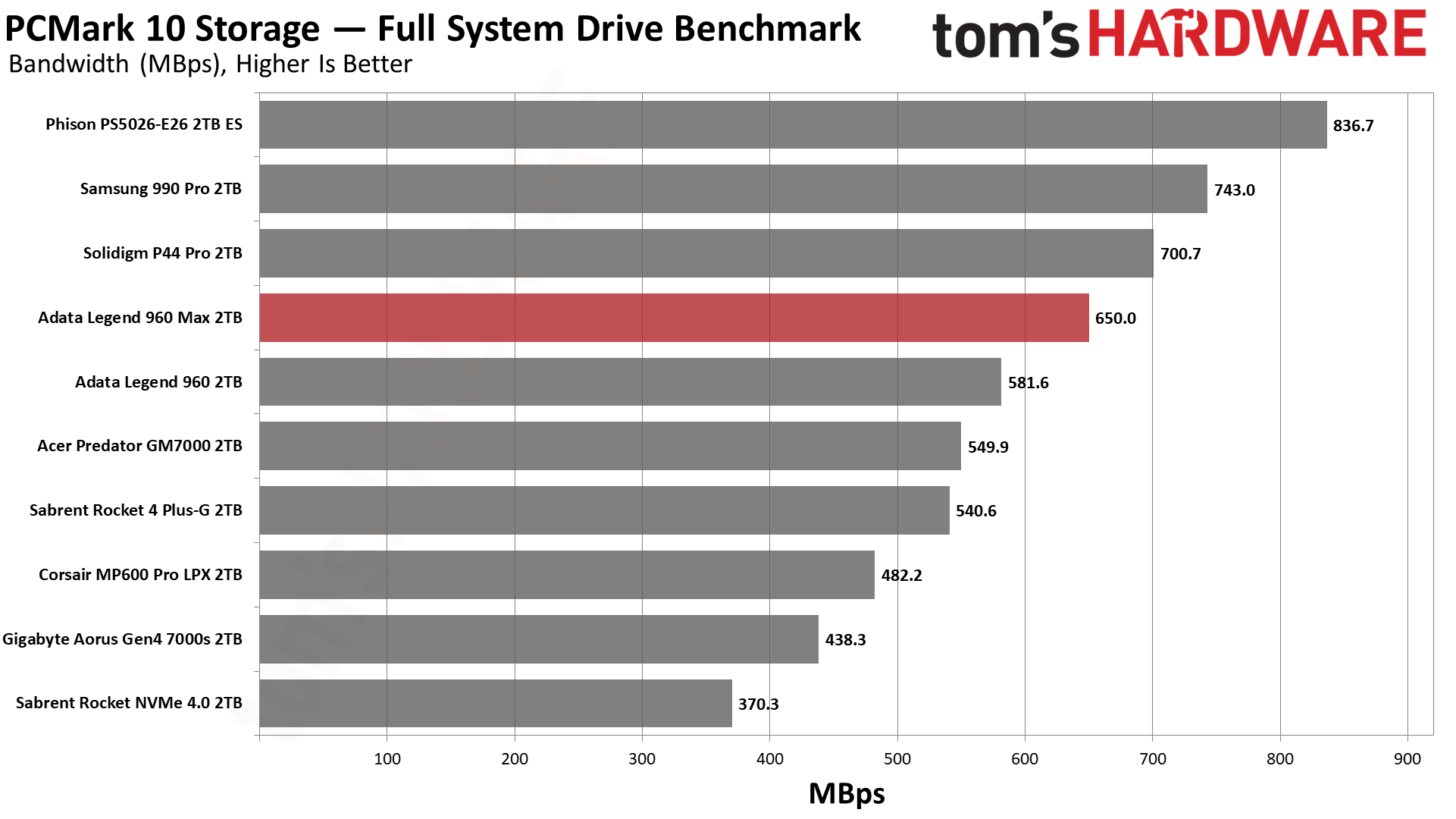
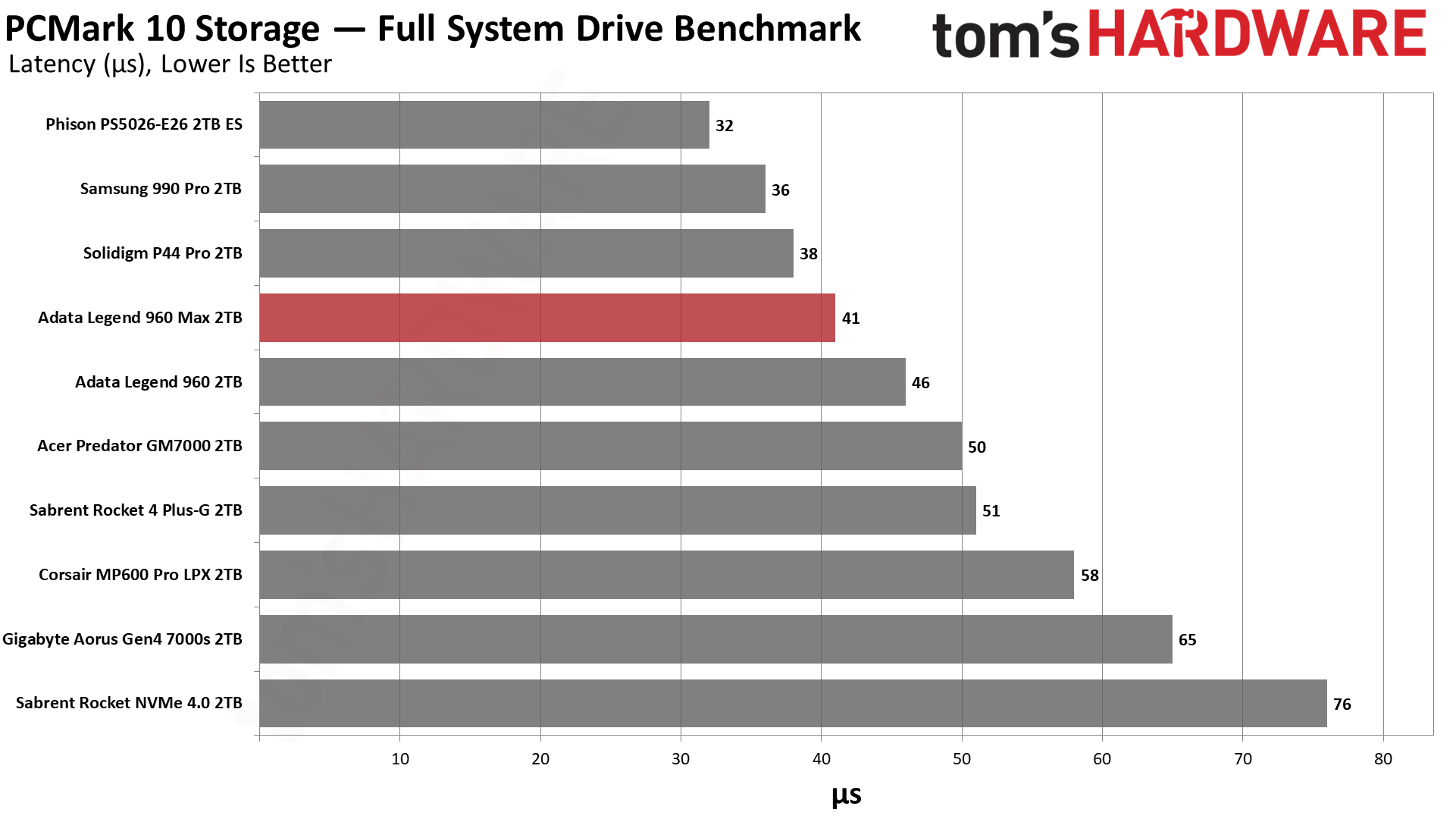
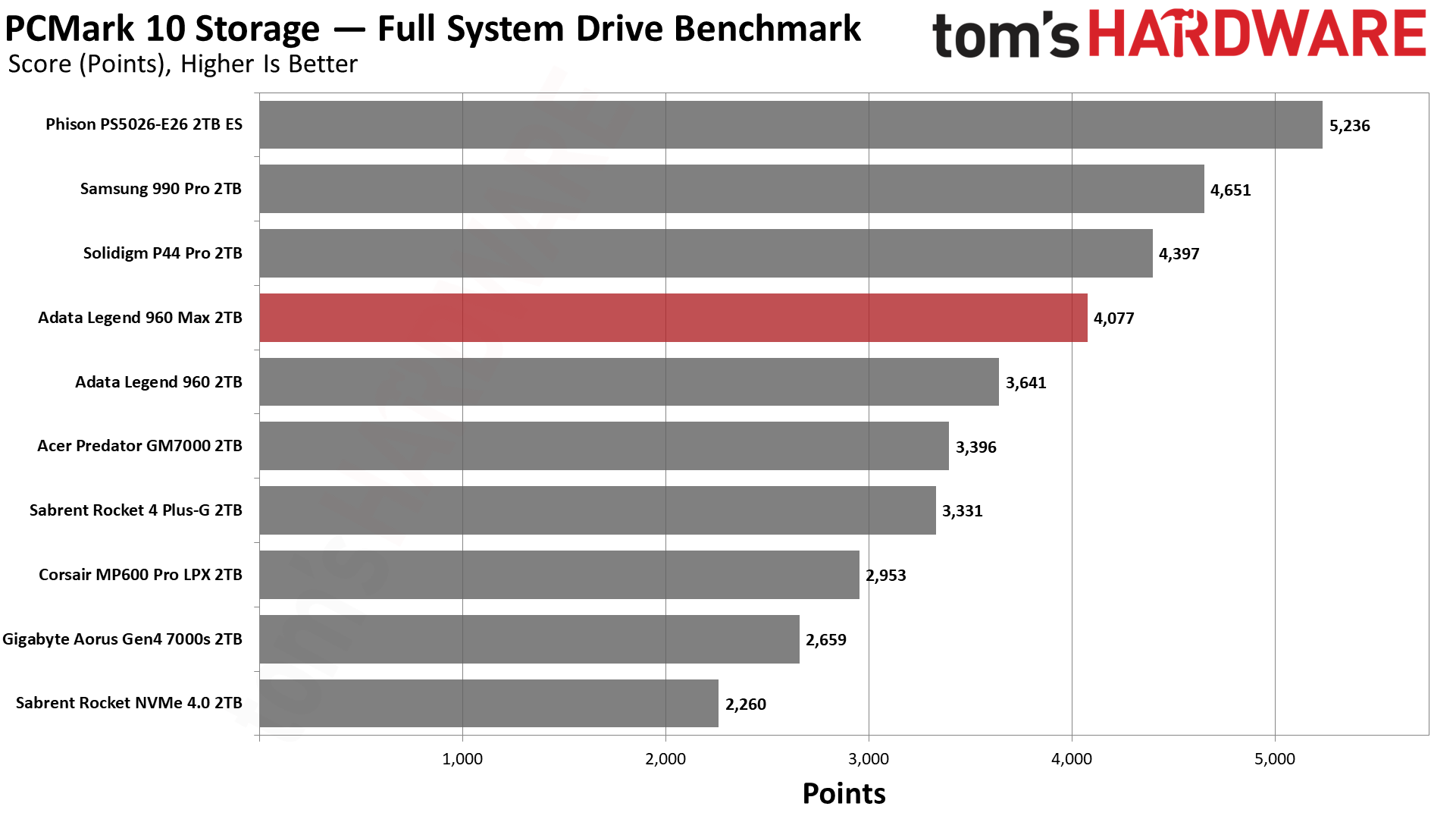
The Legend 96 Max does pretty well in PCMark 10, average to above average, but still can’t catch the P44 Pro or 990 Pro. SMI controllers and Micron’s flash have provided a good general user experience in the past, so this is plenty fast for daily use.
Transfer Rates – DiskBench
We use the DiskBench storage benchmarking tool to test file transfer performance with a custom, 50GB dataset. We copy 31,227 files of various types, such as pictures, PDFs, and videos to a new folder and then follow-up with a reading test of a newly-written 6.5GB zip file.
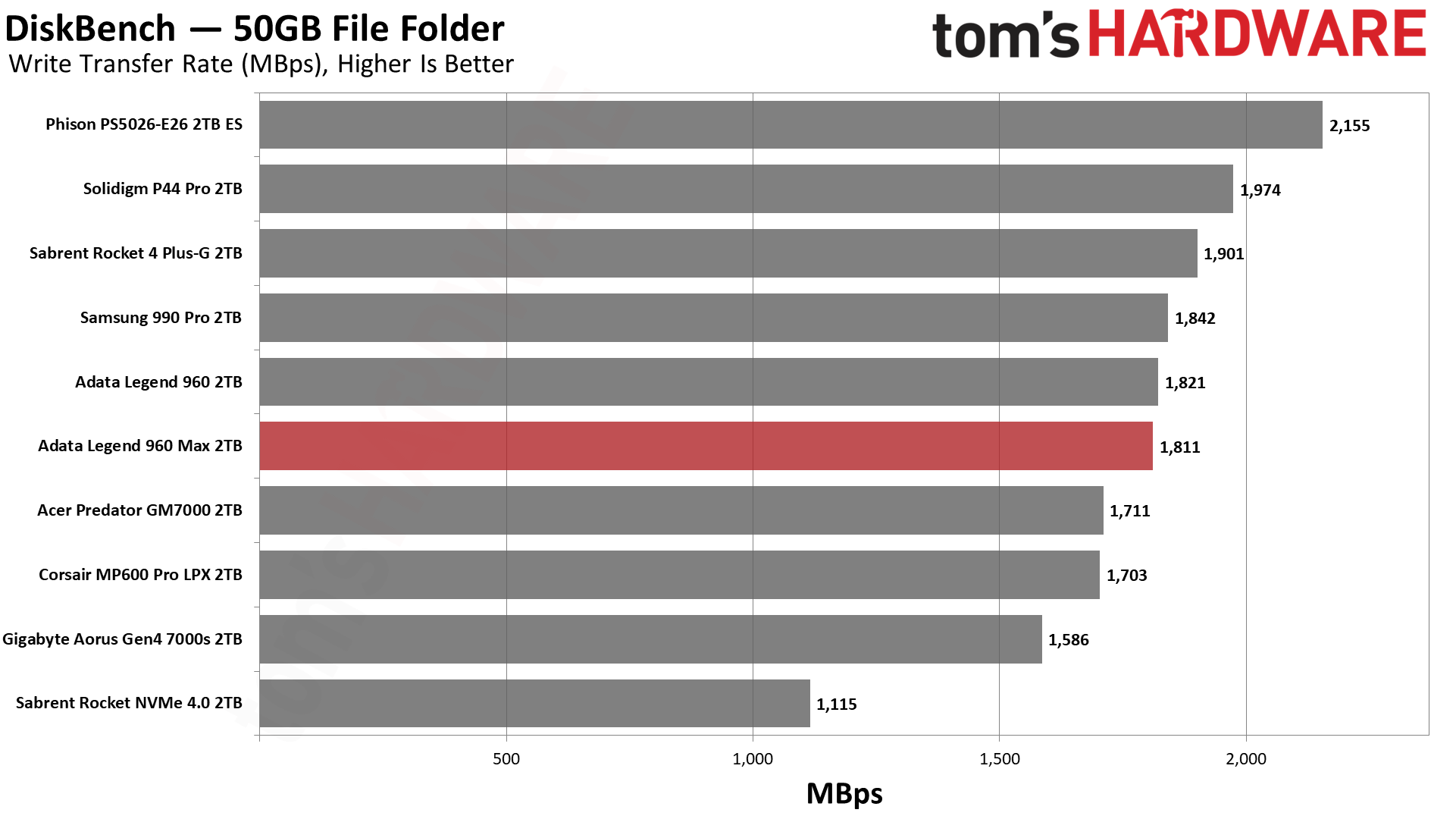
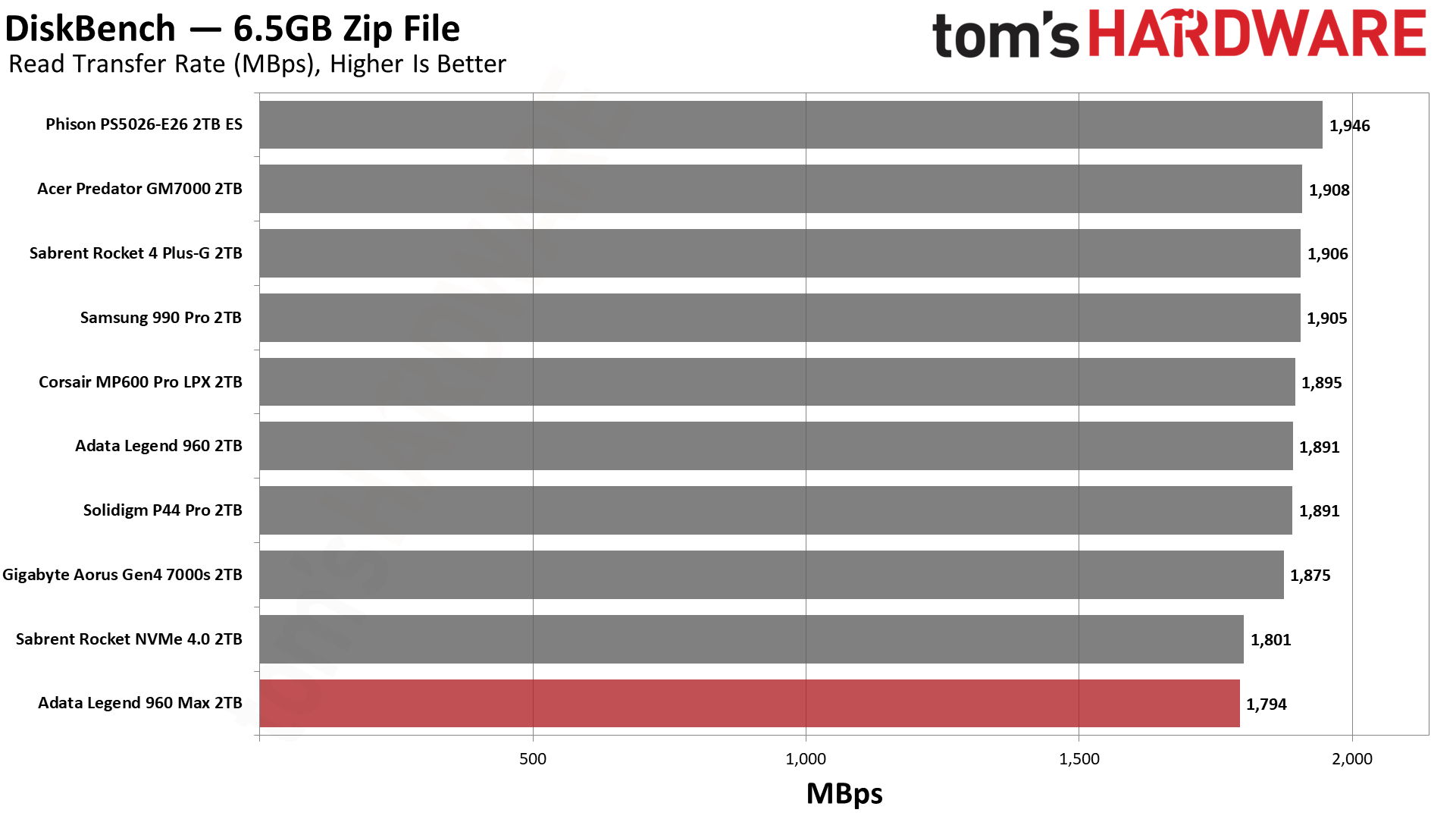
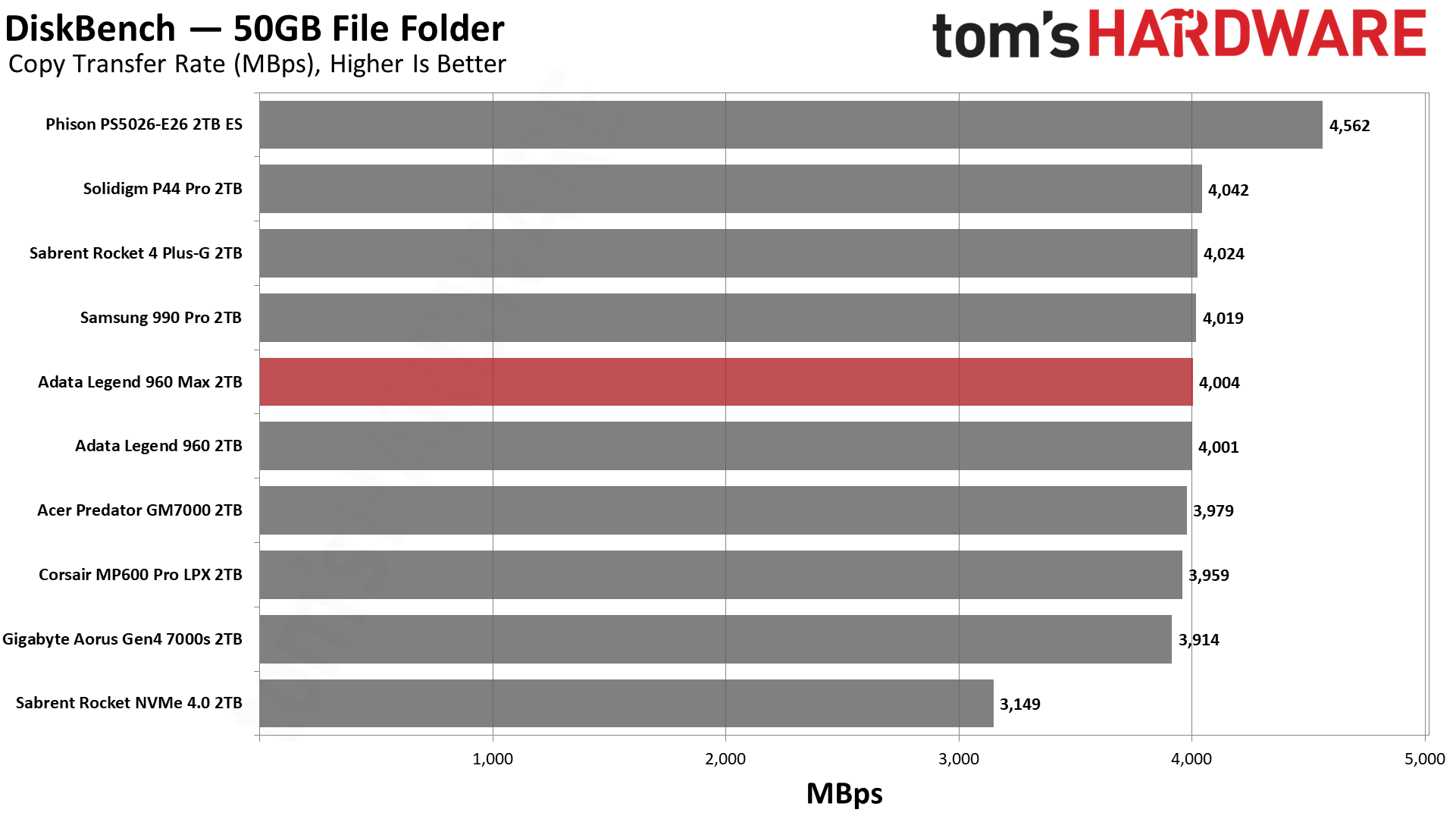
The Legend 960 max copies sufficiently fast, like other high-end PCIe 4.0 SSDs, but does not stand out with reads or writes.
Synthetic Testing - ATTO / CrystalDiskMark
ATTO and CrystalDiskMark (CDM) are free and easy-to-use storage benchmarking tools that SSD vendors commonly use to assign performance specifications to their products. Both of these tools give us insight into how each device handles different file sizes.
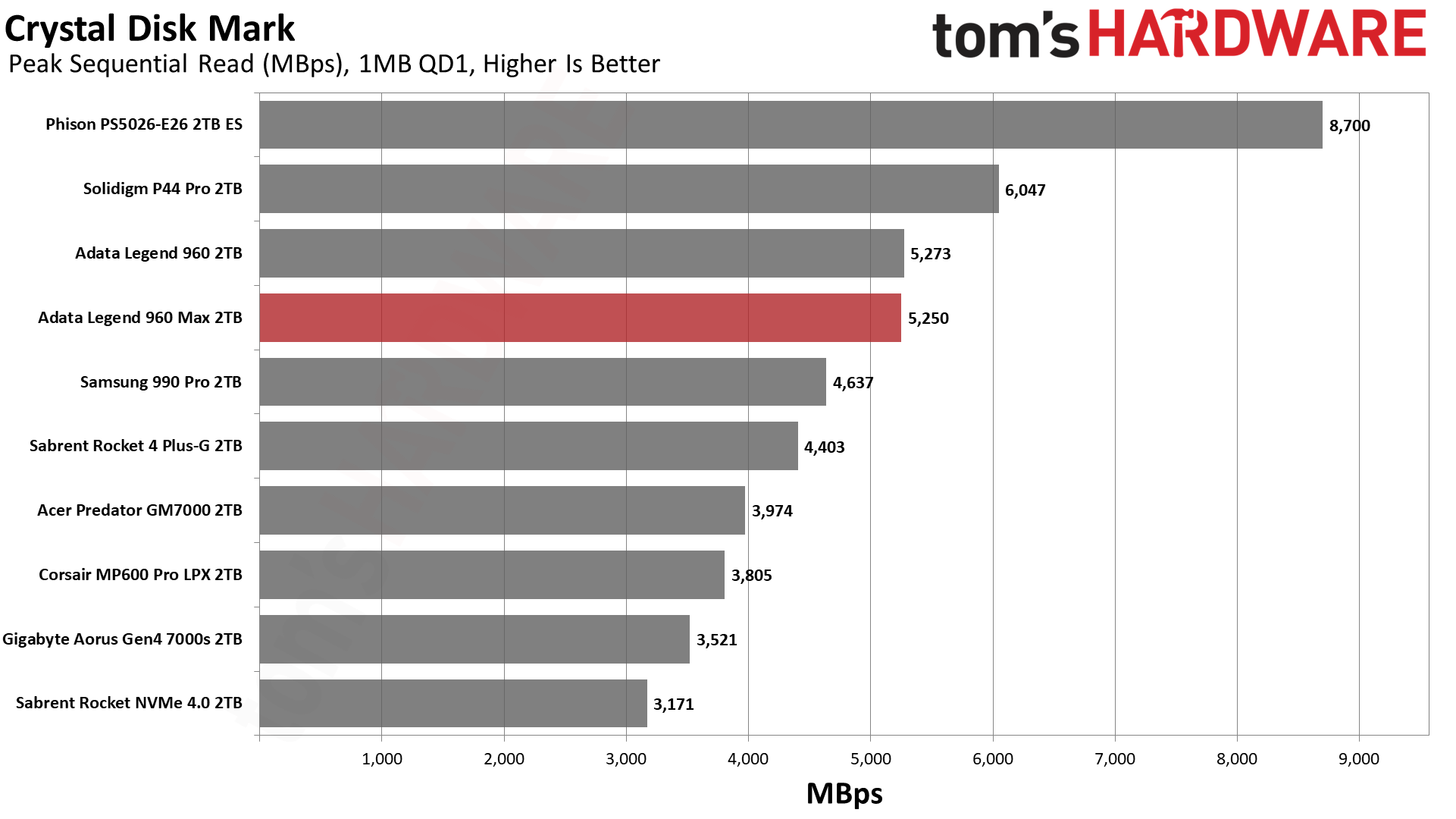
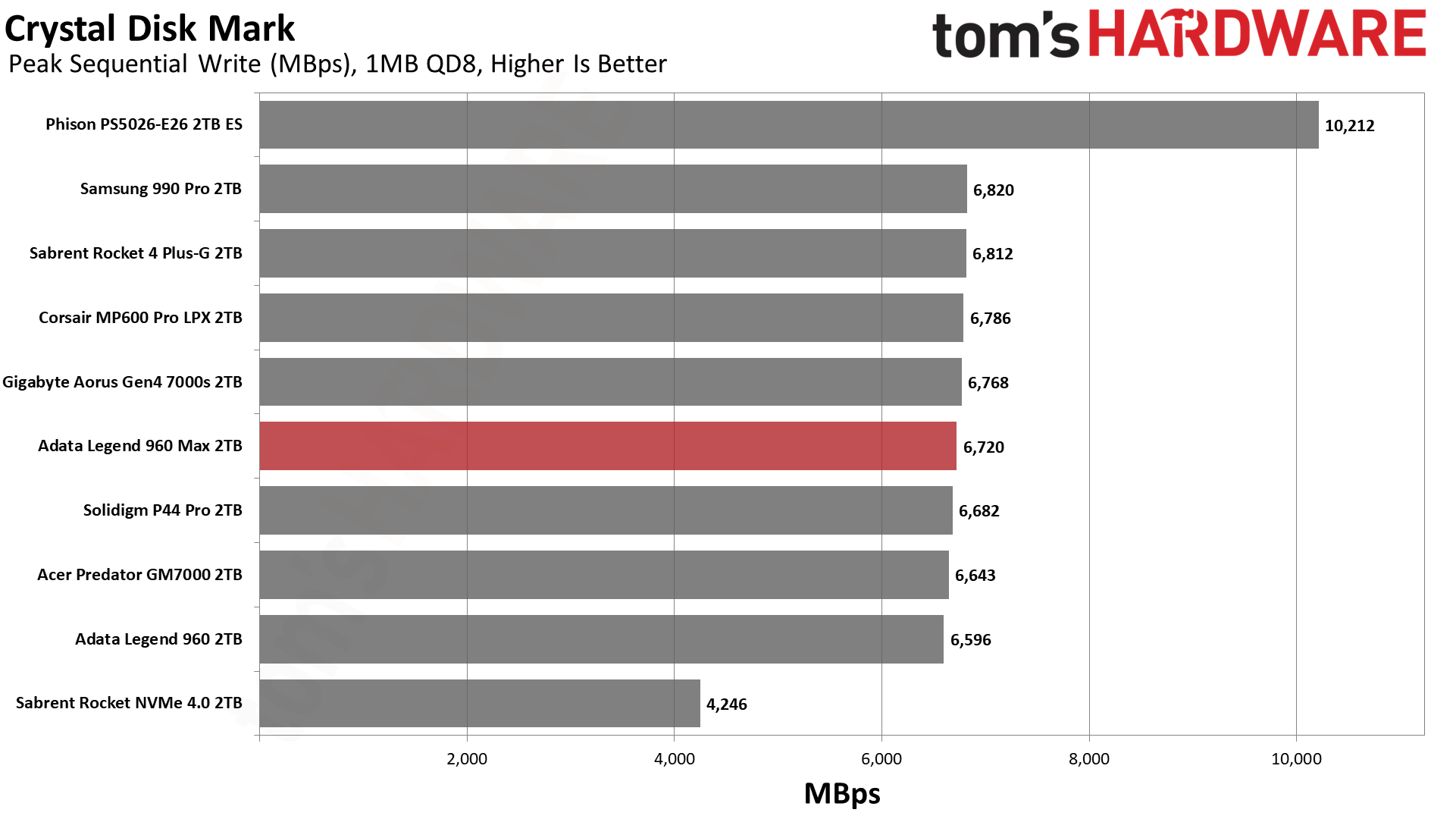
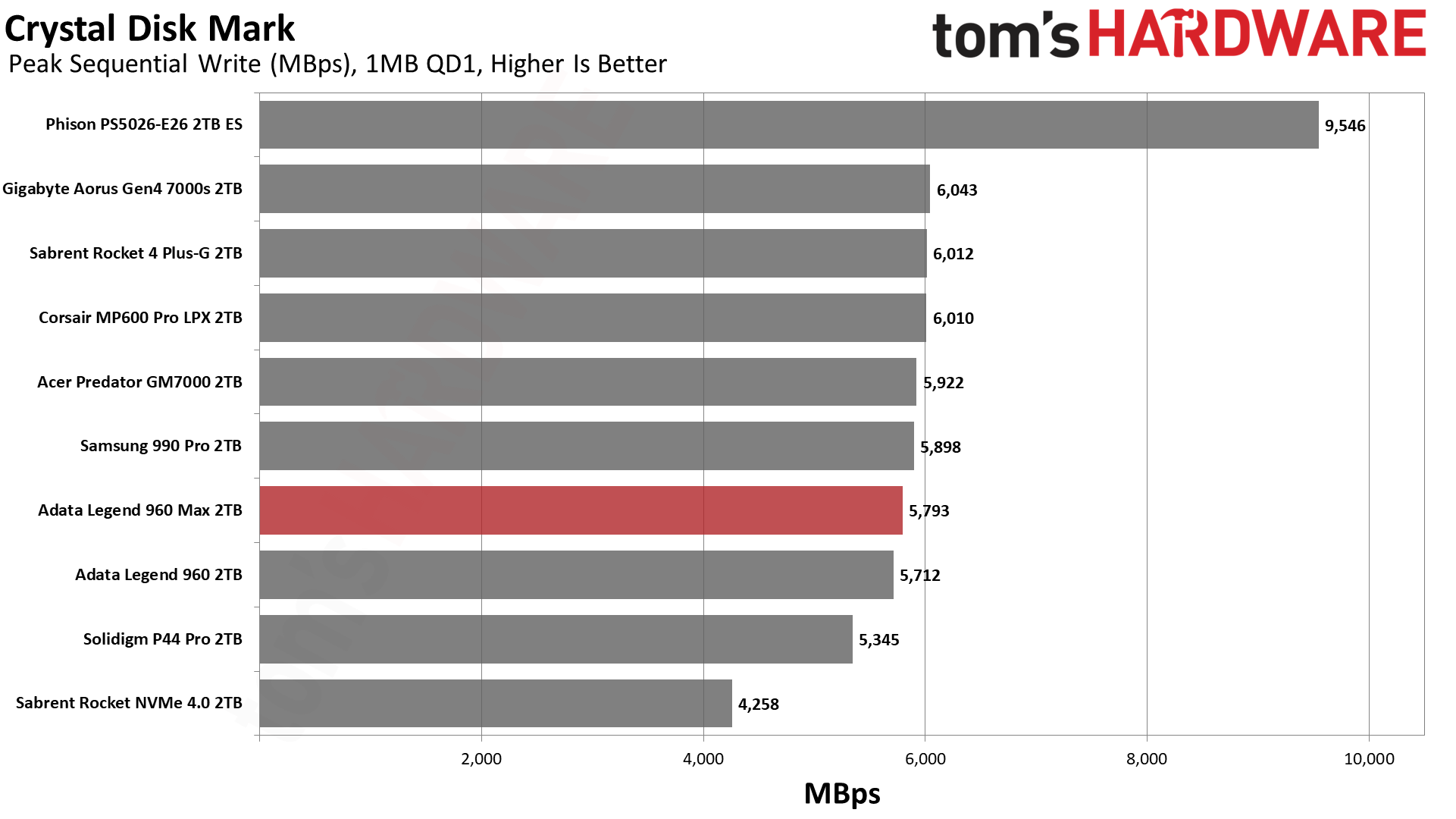
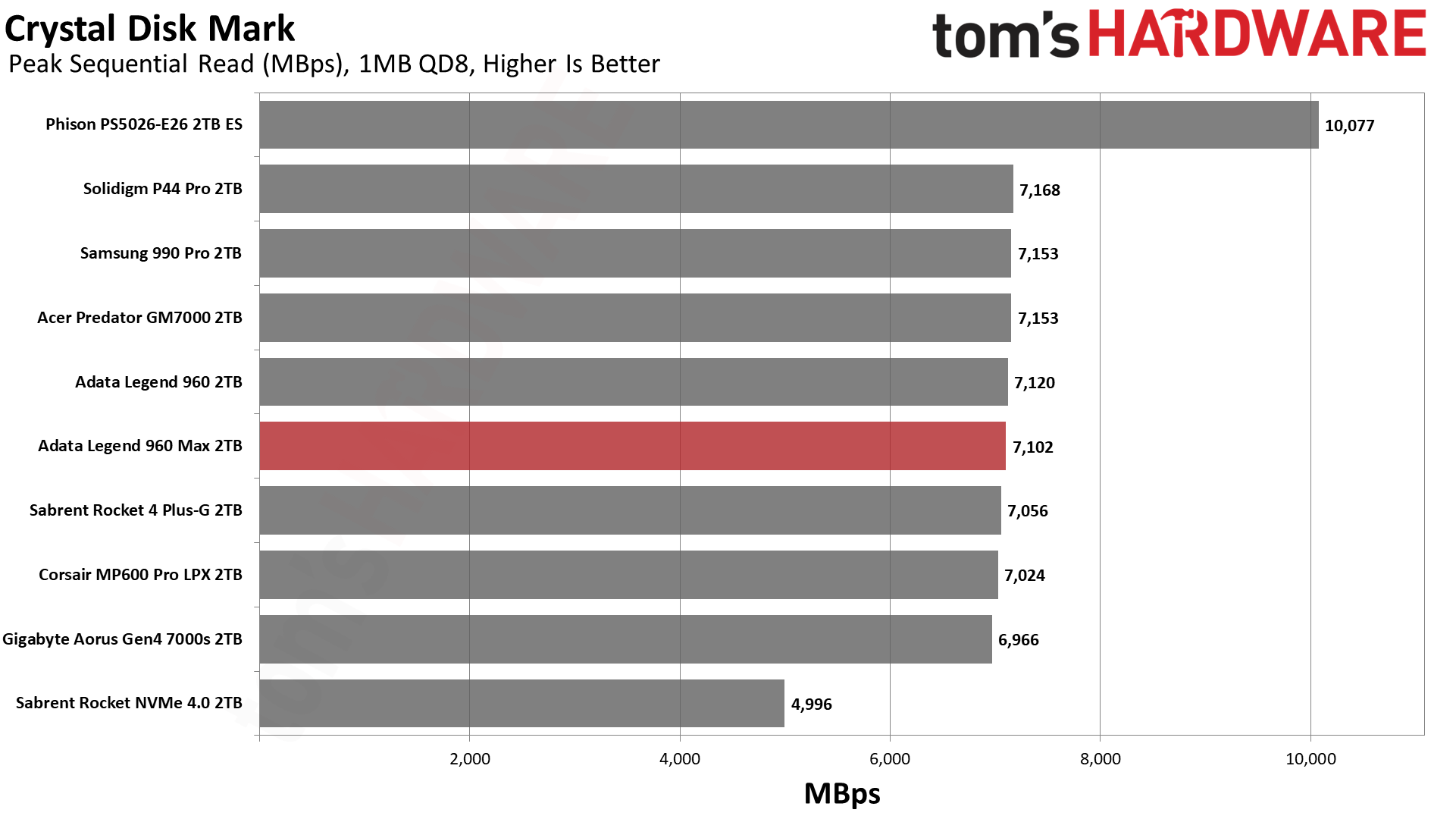
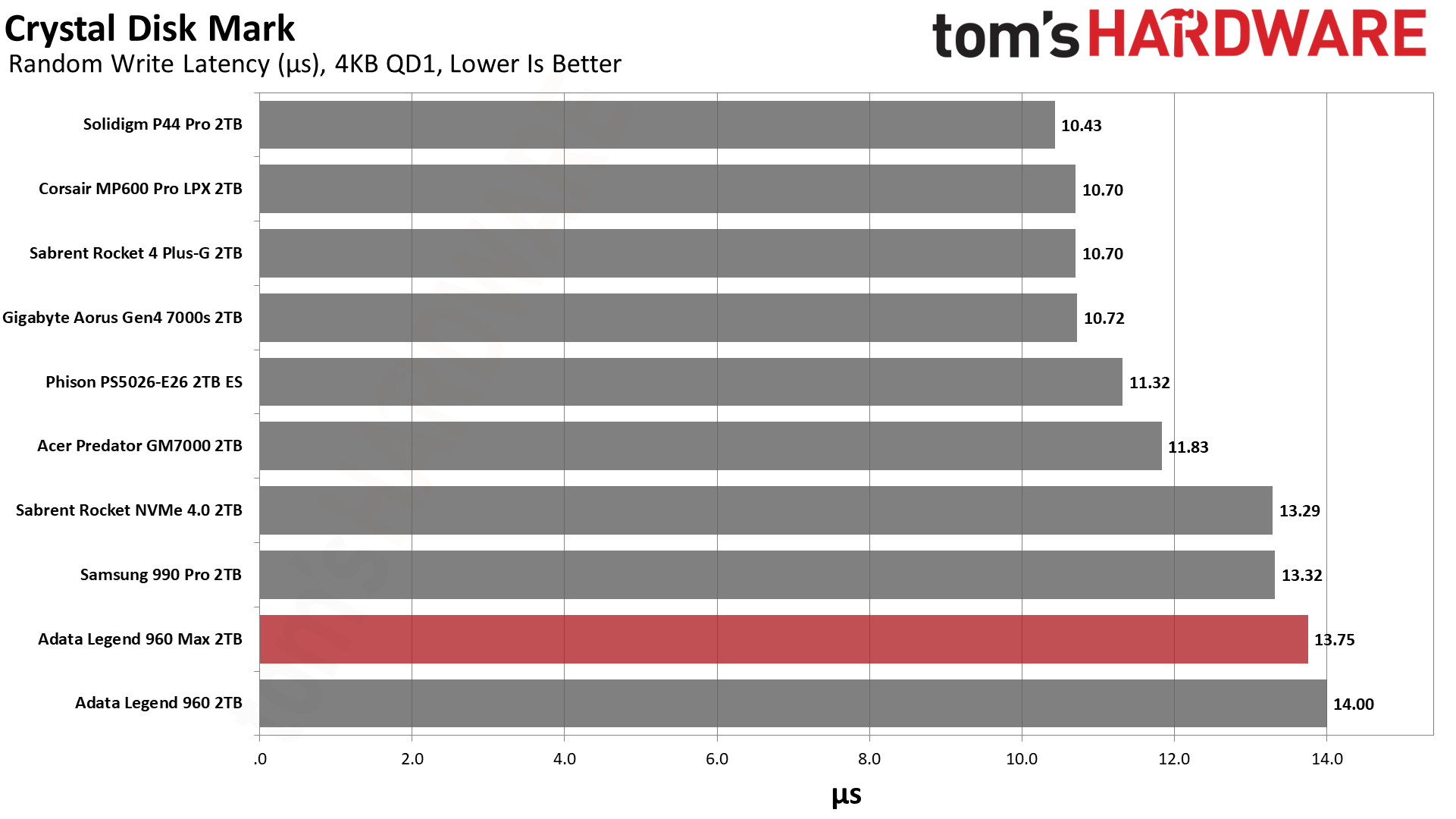
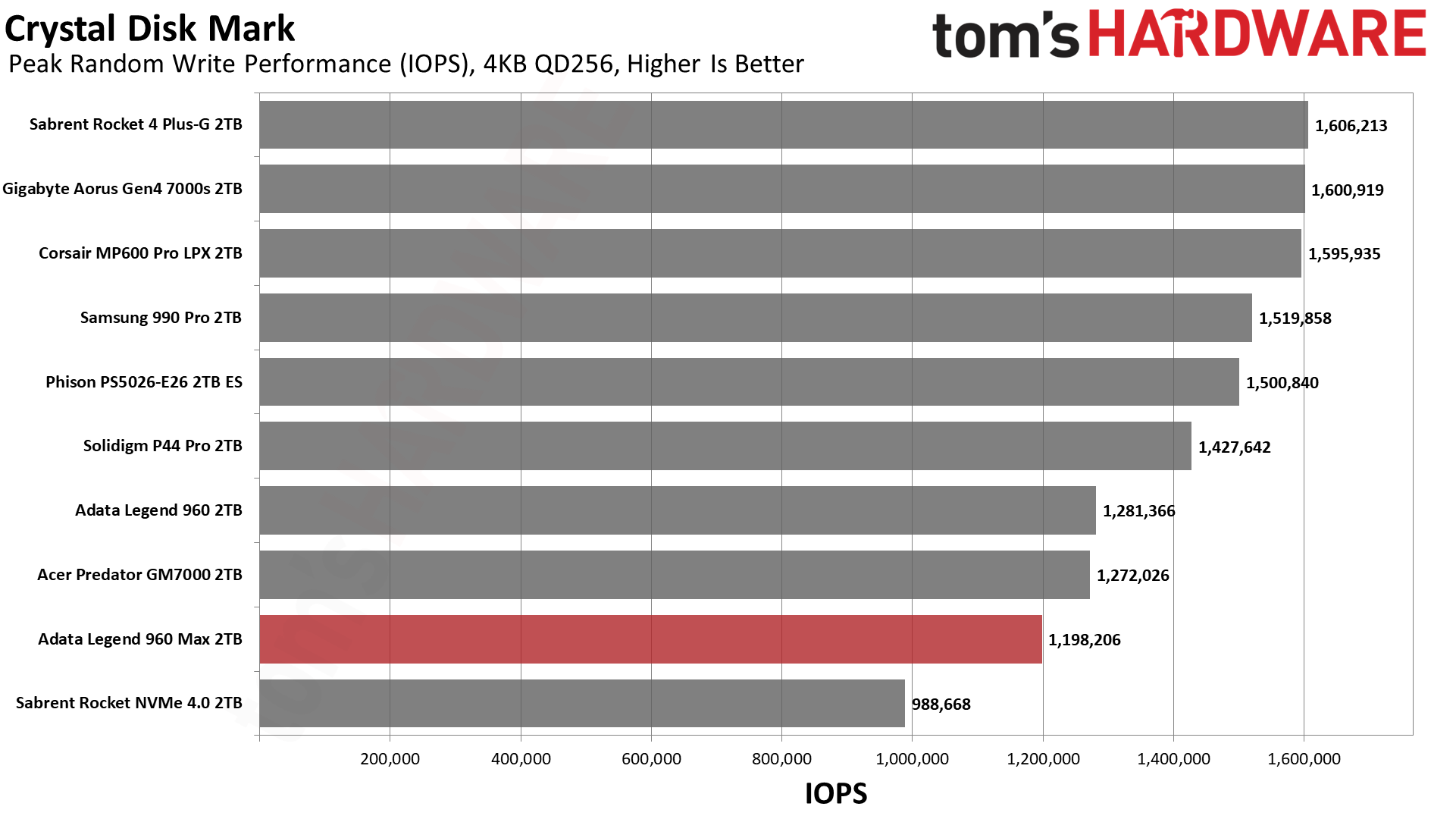
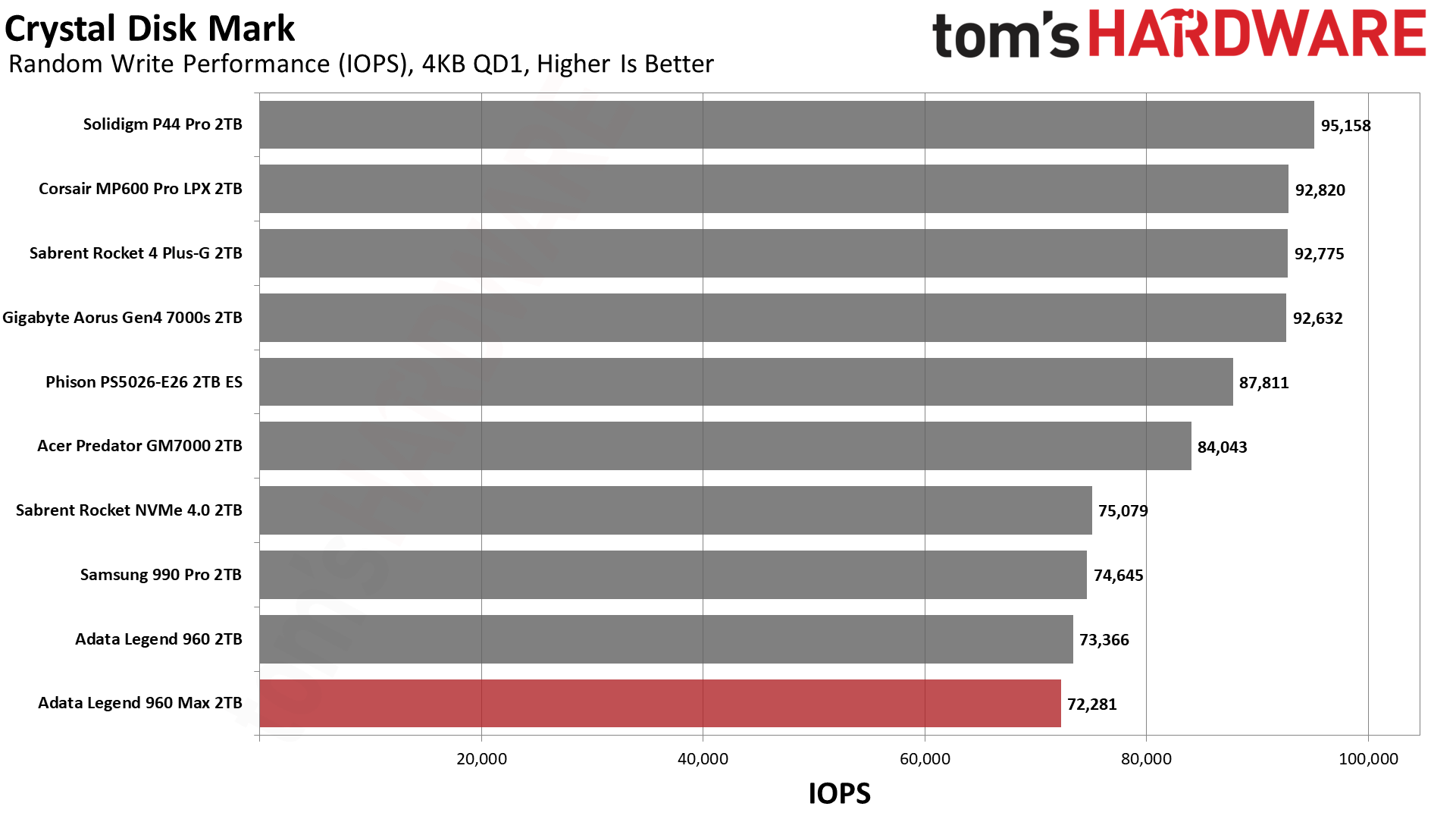
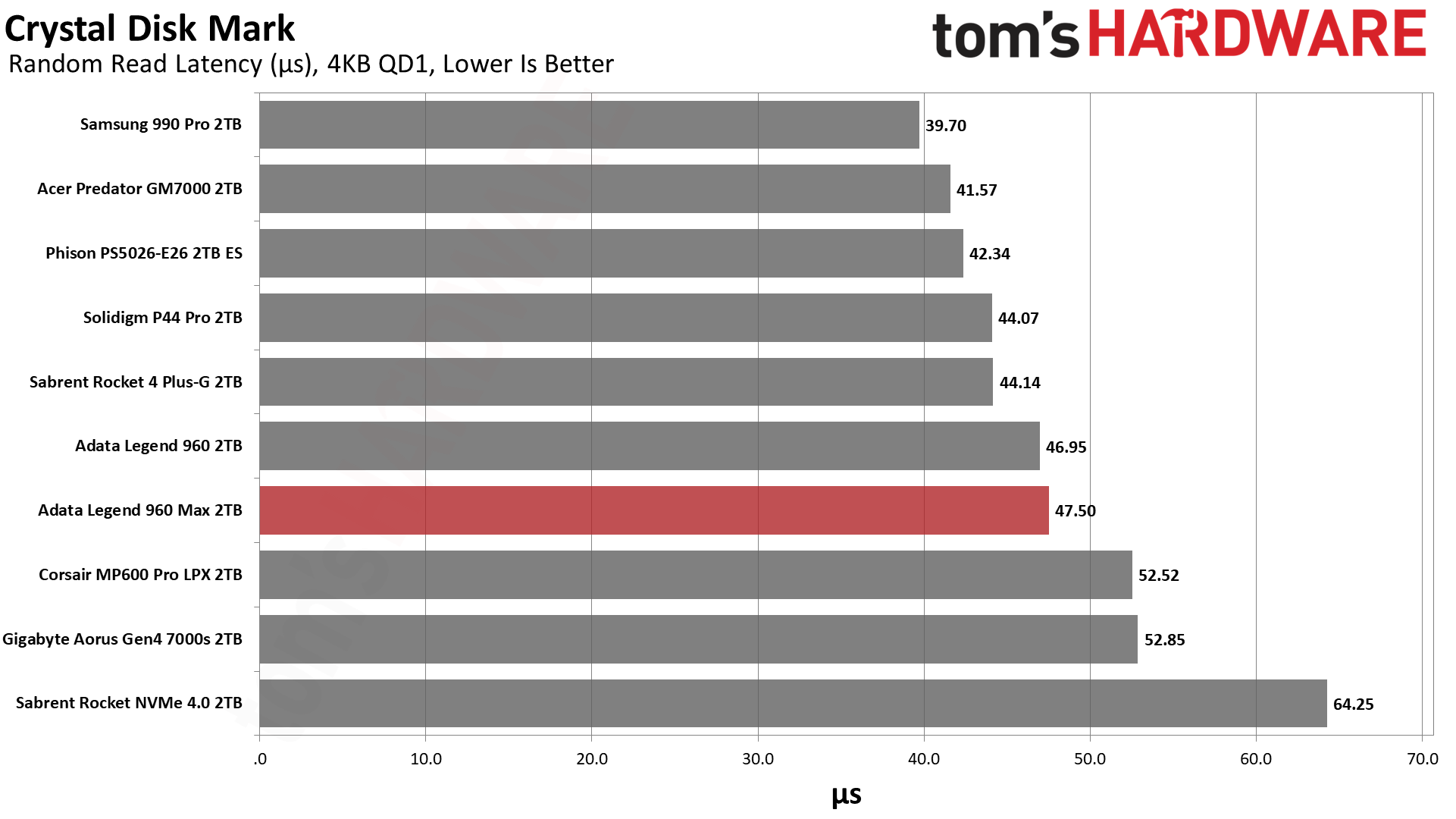
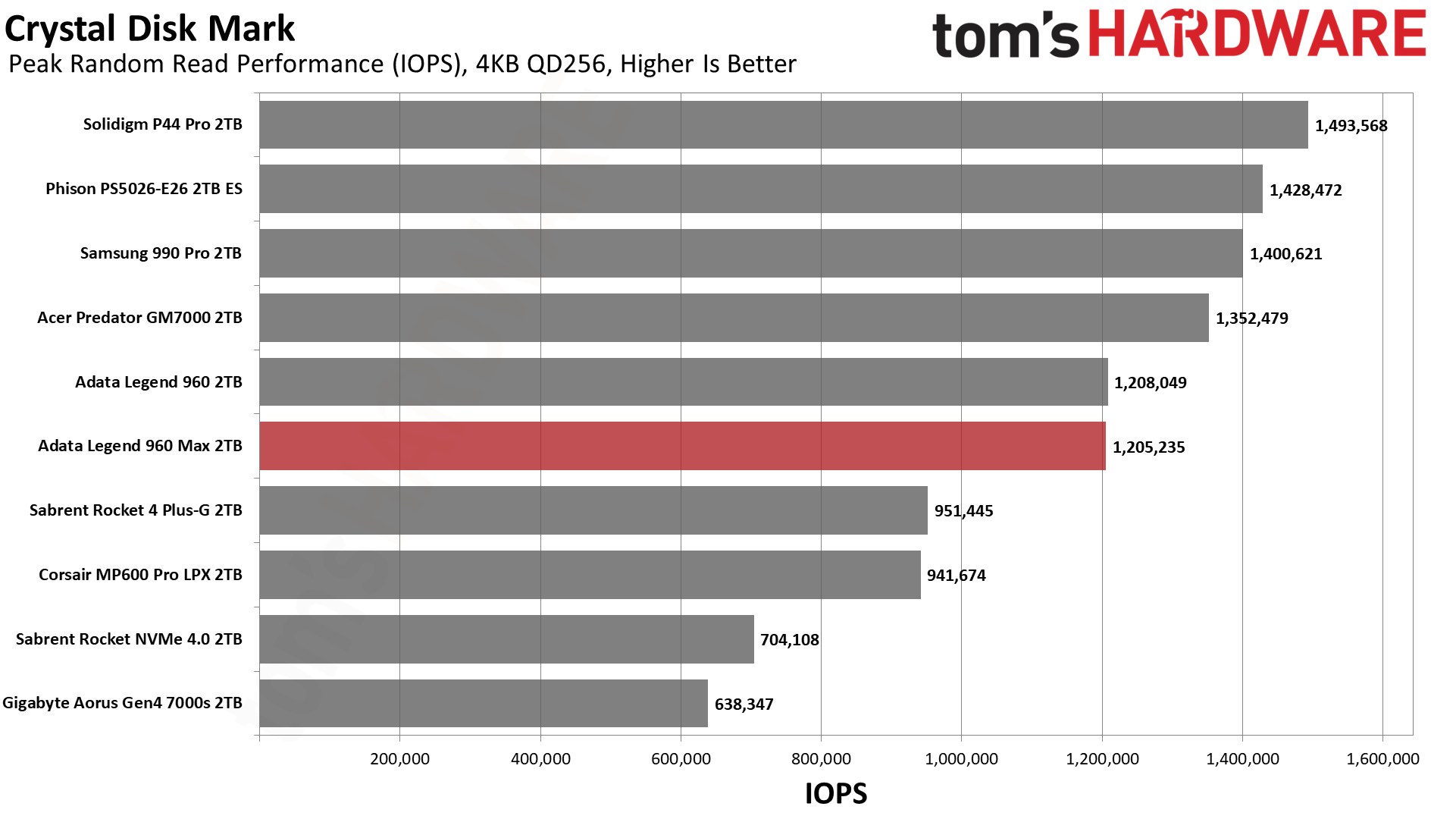
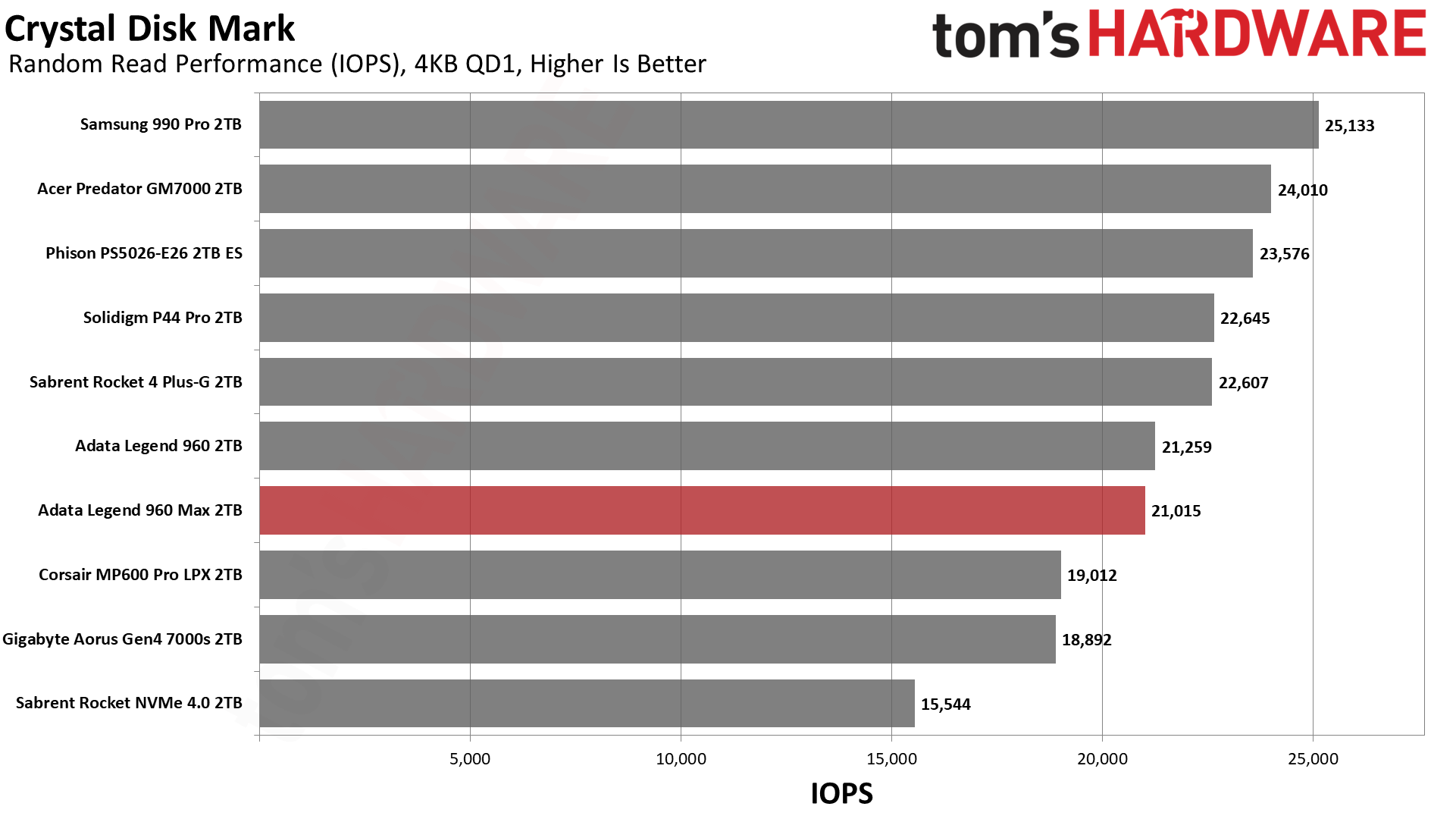
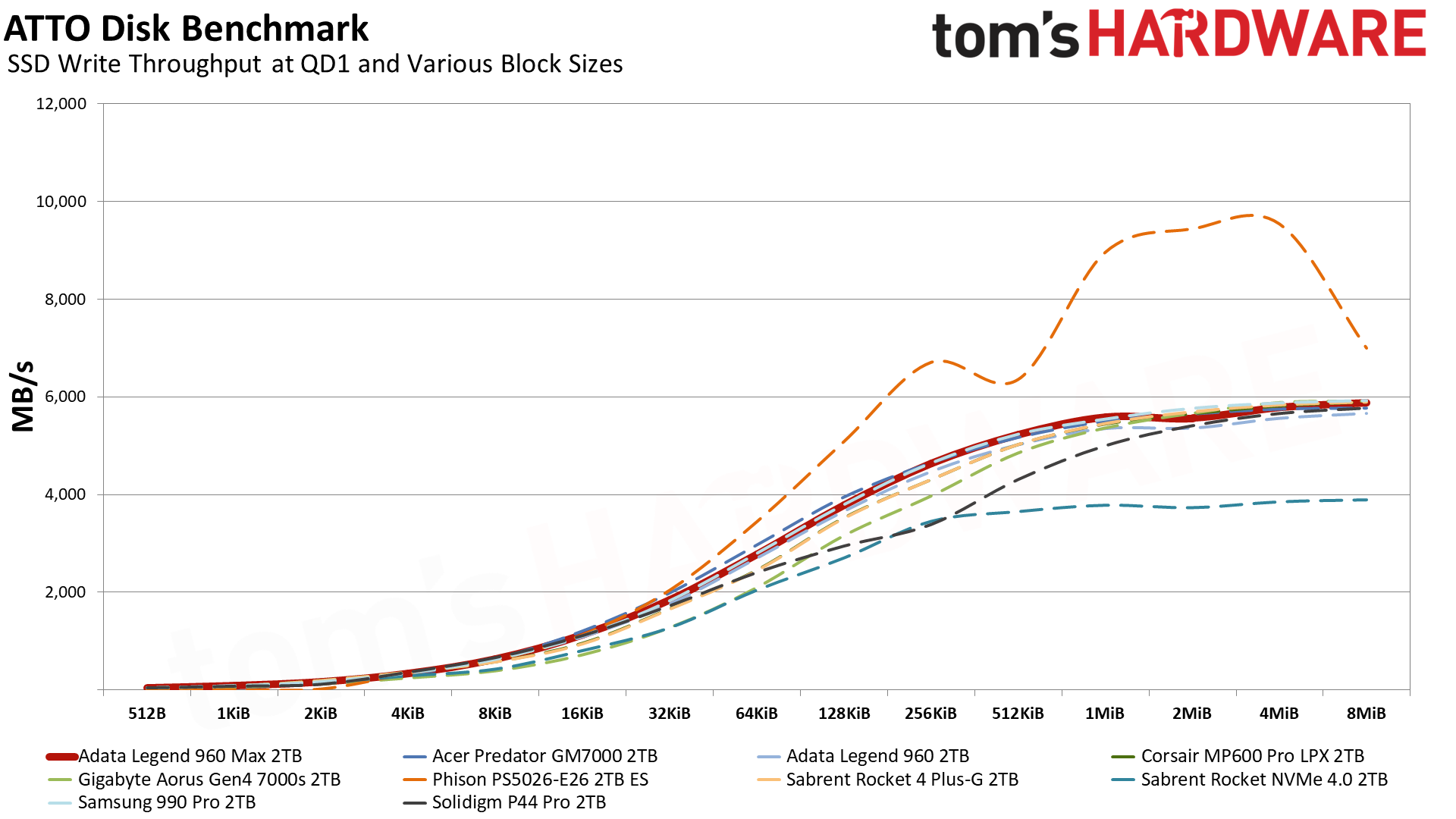
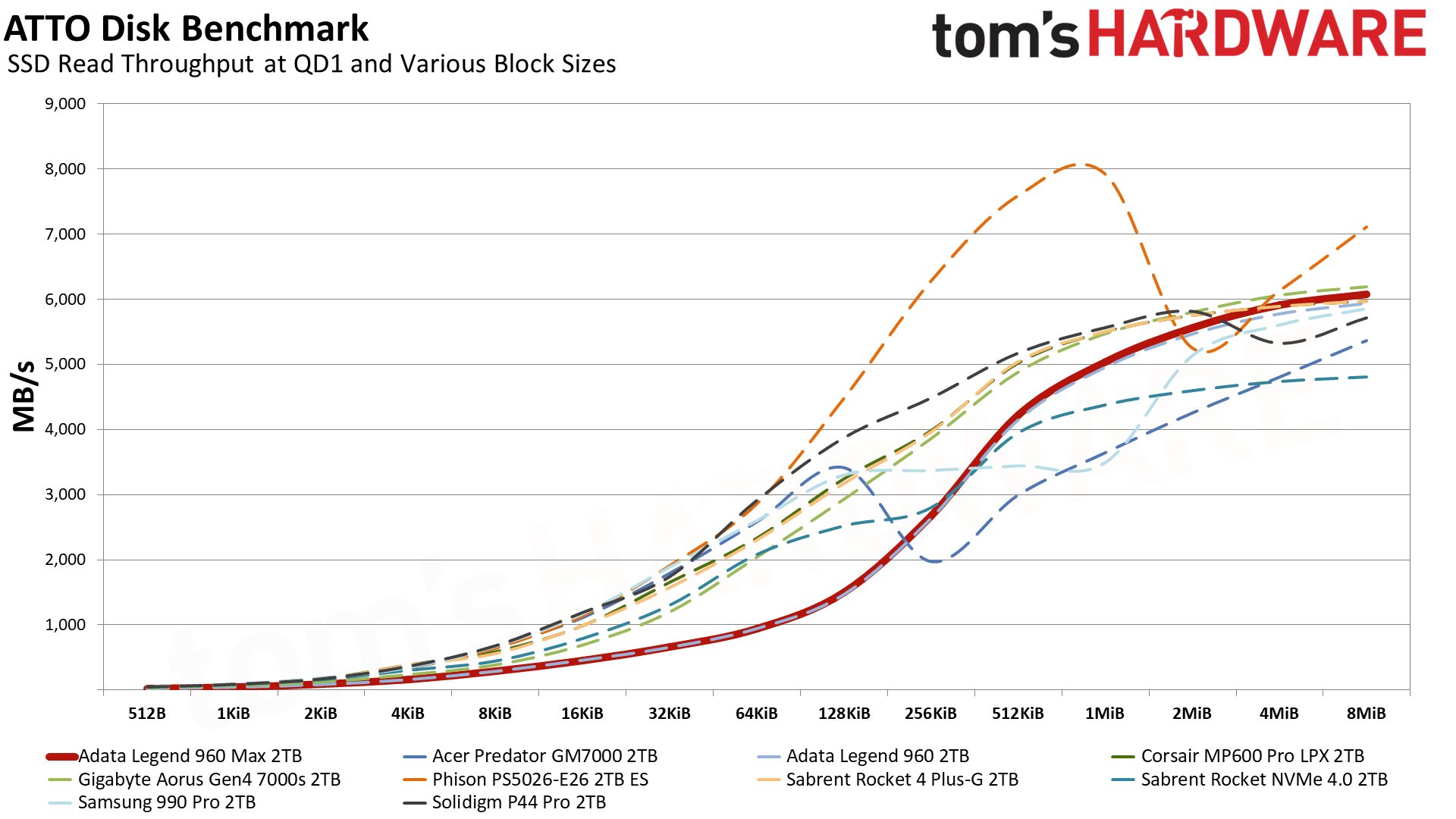
The Legend 960 Max has good ATTO sequential write results, but some improvement would be nice for reads. This could be a factor of the controller with certain block sizes. At 1MB for CDM, things look fine. Random 4KB latency is a bit disappointing as this was an area SMI controllers used to shine. InnoGrit and Phison alternatives simply get more out of this flash.
Sustained Write Performance and Cache Recovery
Official write specifications are only part of the performance picture. Most SSDs implement a write cache, which is a fast area of (usually) pseudo-SLC programmed flash that absorbs incoming data. Sustained write speeds can suffer tremendously once the workload spills outside of the cache and into the "native" TLC or QLC flash.
We use Iometer to hammer the SSD with sequential writes for 15 minutes to measure both the size of the write cache and performance after the cache is saturated. We also monitor cache recovery via multiple idle rounds.
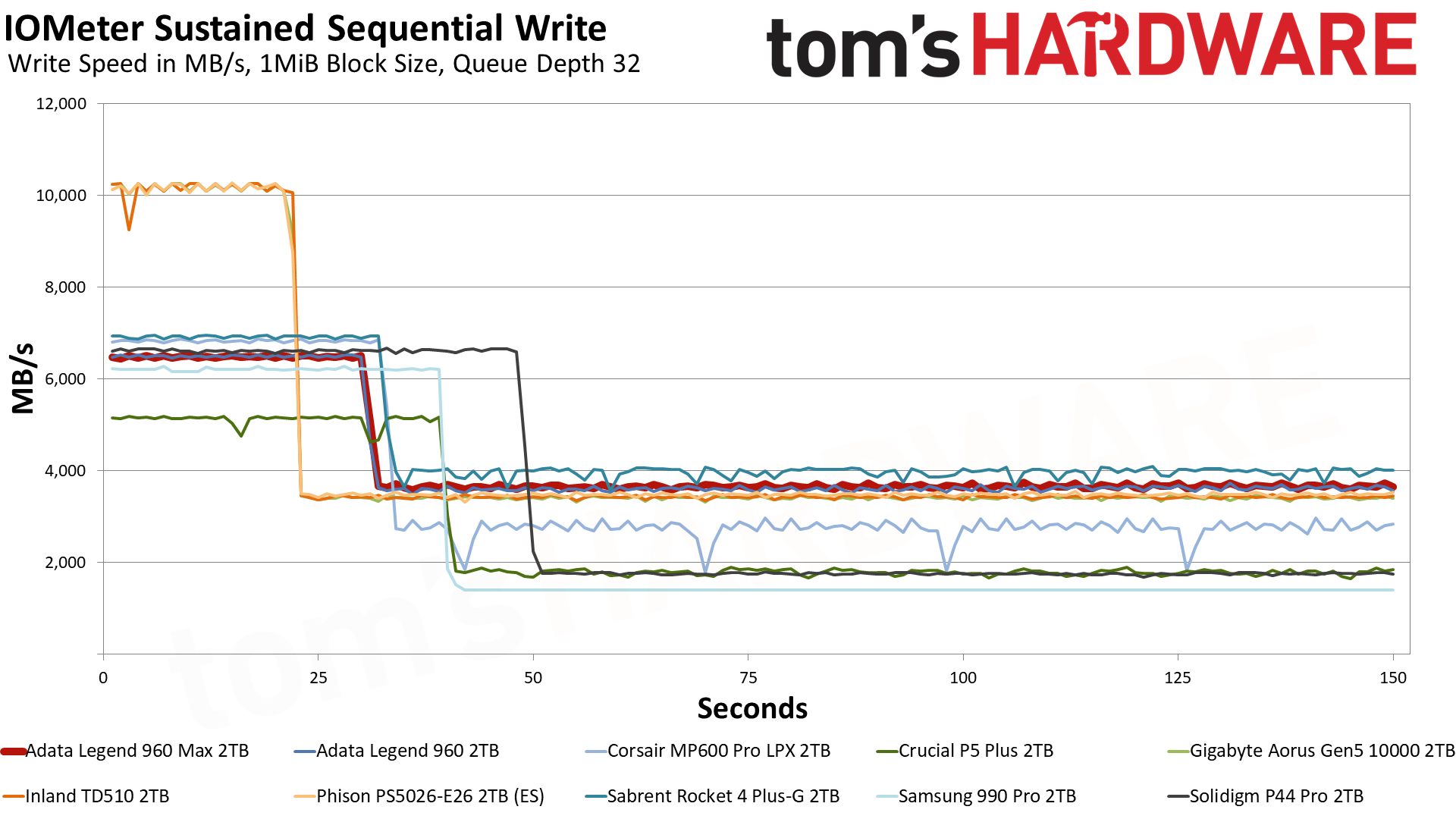
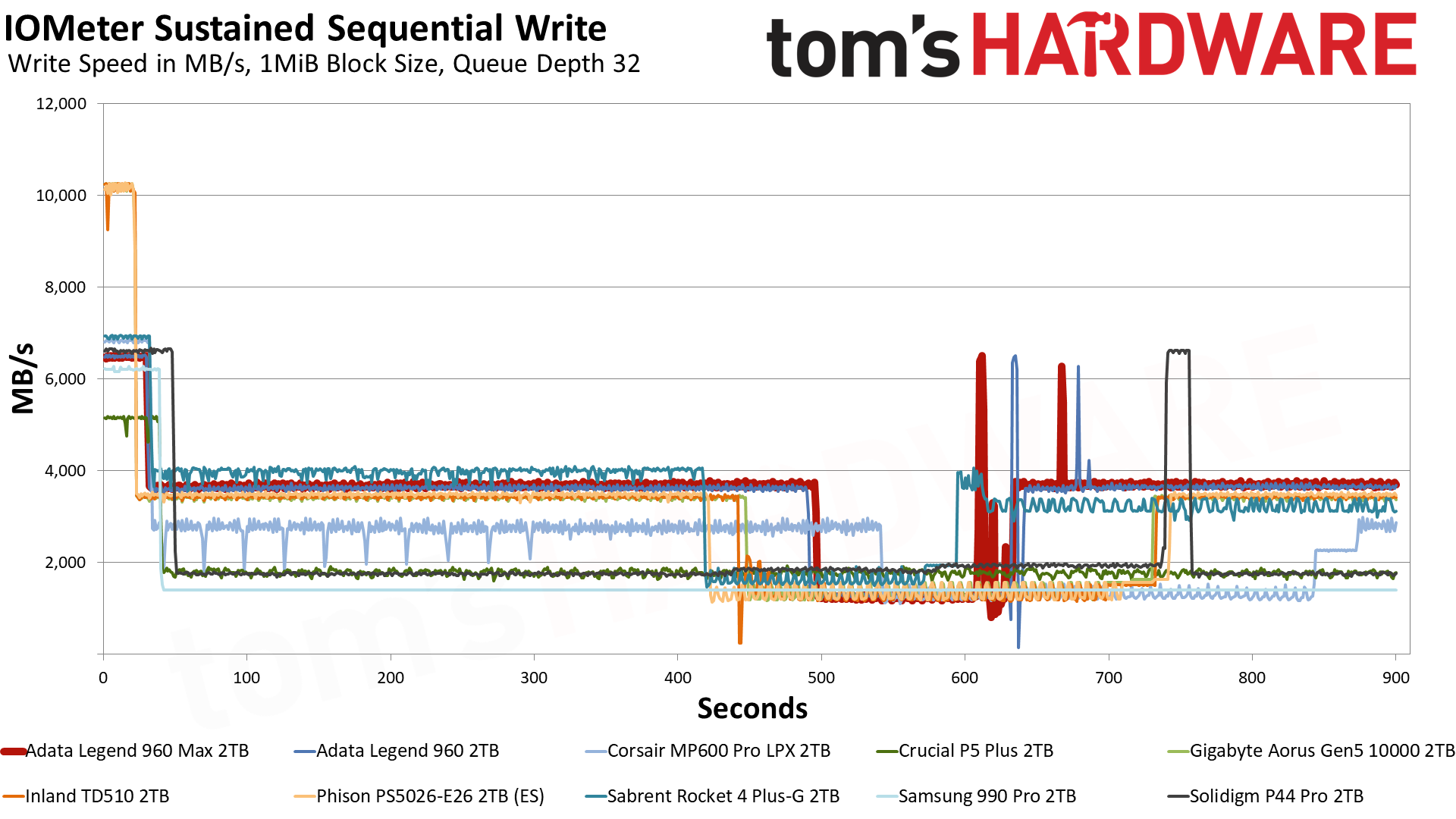
The 2TB Legend 960 Max manages almost 6.5 GBps for over 30 seconds which a sufficiently large cache of 200GB. The TLC mode is pleasing at up to 3.6 GBps, and even folding is reasonable at nearly 1.3 GBps. Recovery to TLC is relatively rapid and its performance is sufficient for some sustained workloads.
As with the original Legend 960, this makes the drive useful for certain workloads while having a cache that’s large enough to handle bursty, random writes. The addition of a heatsink on the Max makes this drive even better as it could work well as a caching drive without suffering from the detrimental aspects of heat.
Power Consumption
We use the Quarch HD Programmable Power Module to gain a deeper understanding of power characteristics. Idle power consumption is an important aspect to consider, especially if you're looking for a laptop upgrade as even the best ultrabooks can have mediocre storage.
Some SSDs can consume watts of power at idle while better-suited ones sip just milliwatts. Average workload power consumption and max consumption are two other aspects of power consumption, but performance-per-watt is more important. A drive might consume more power during any given workload, but accomplishing a task faster allows the drive to drop into an idle state more quickly, ultimately saving energy.
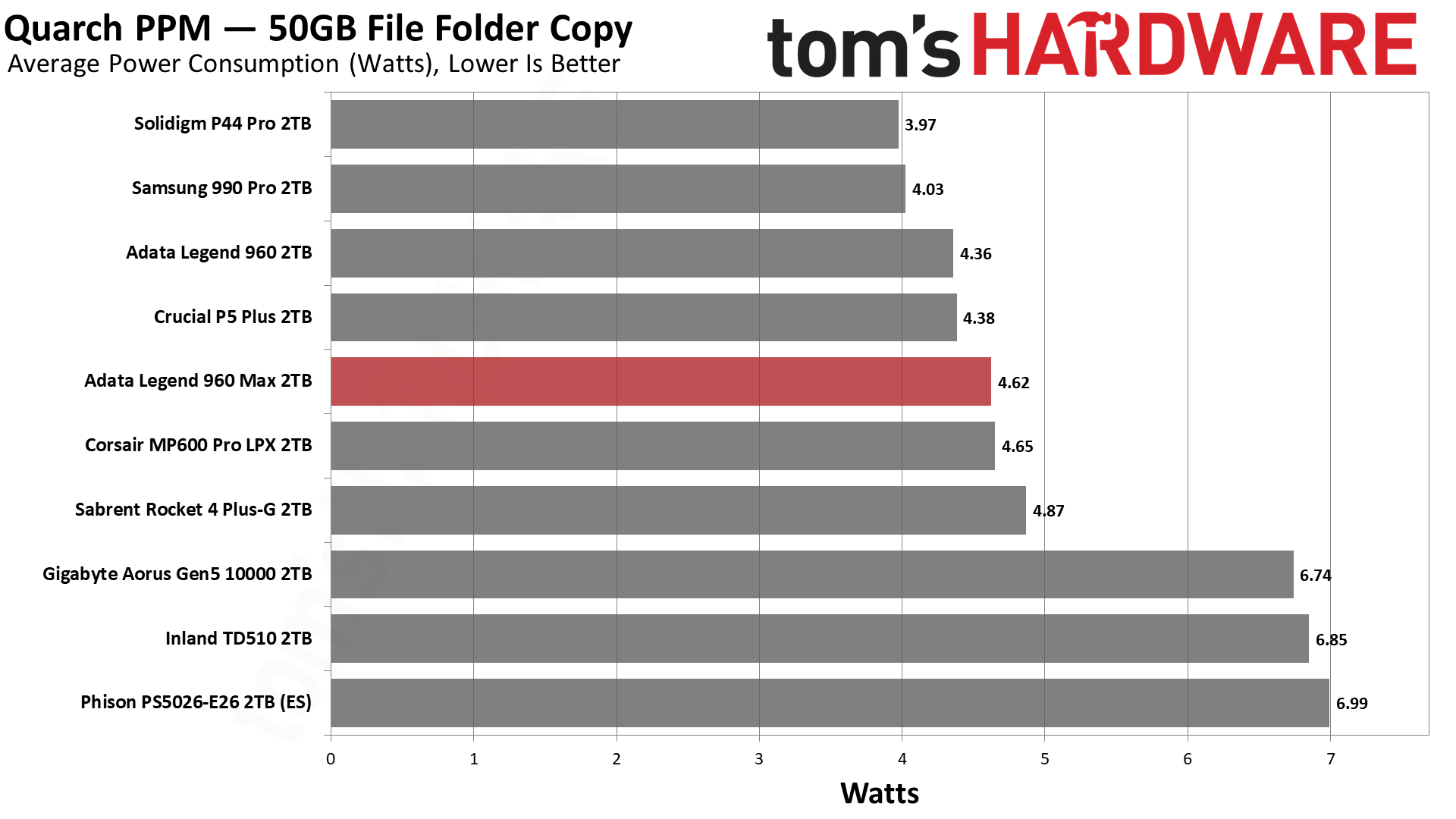
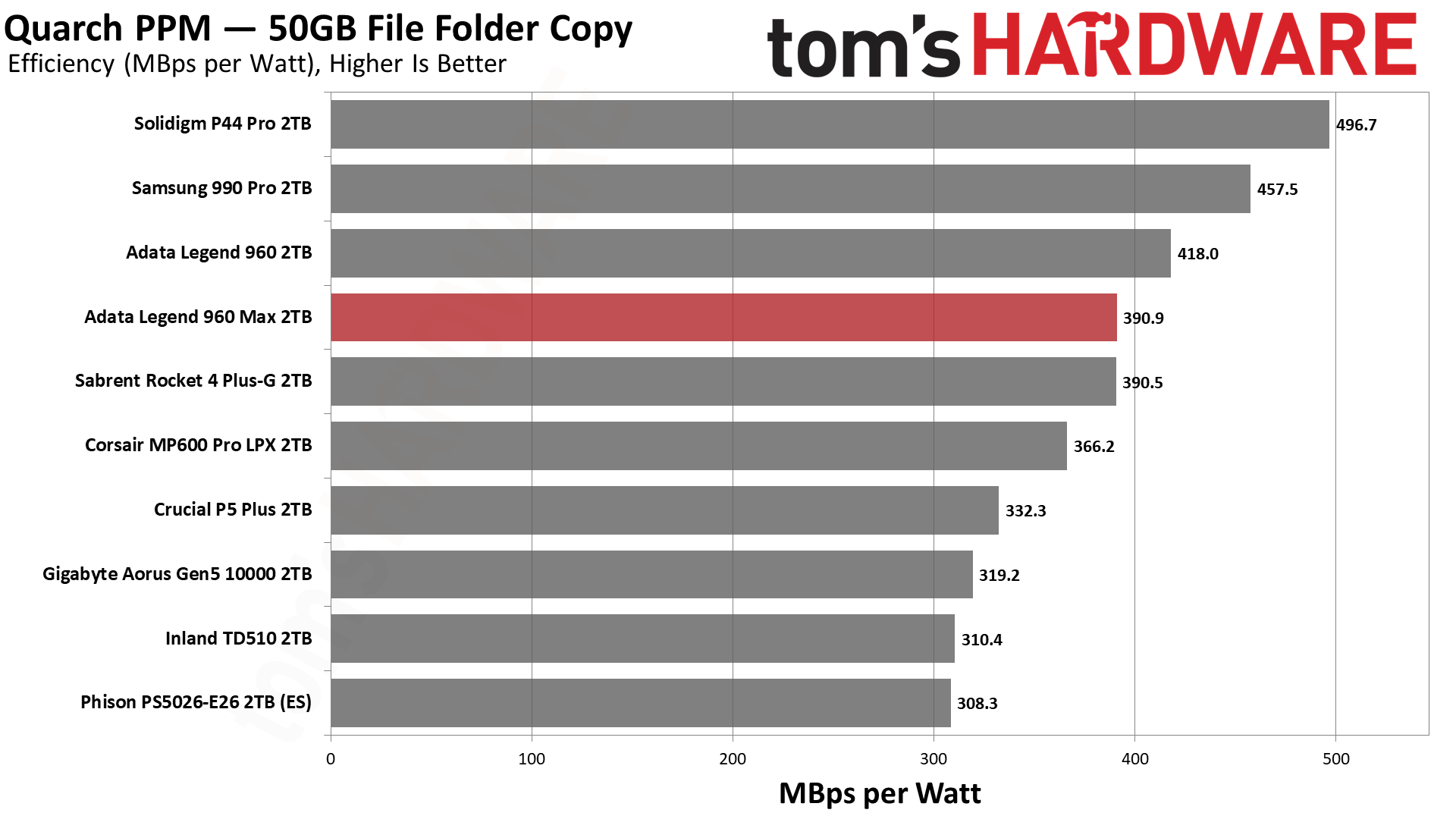
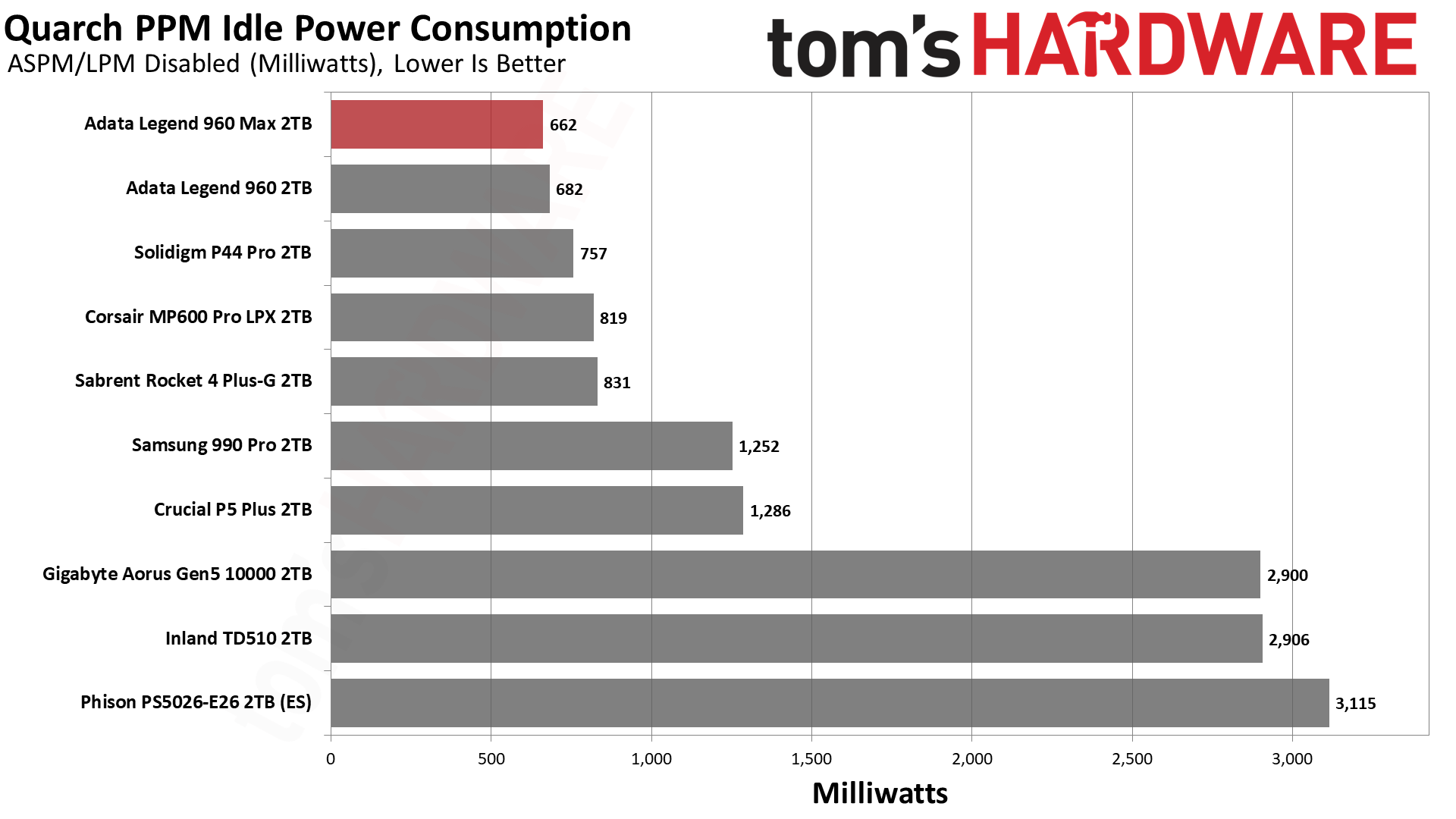
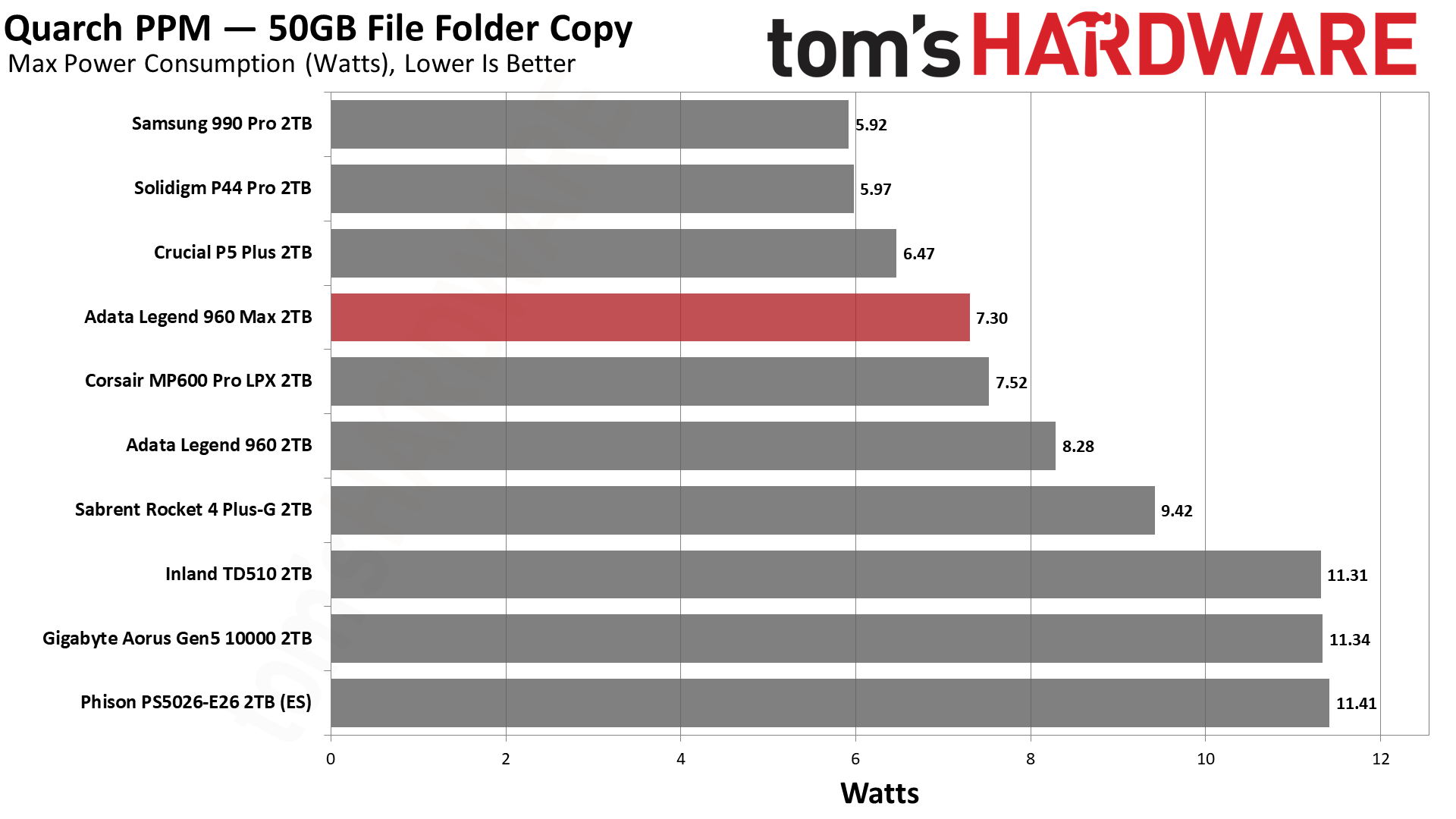
Combined with the above results for write saturation, the Legend 960 Max would be even better if it had good power efficiency under load. Unfortunately, it is not exceptional here, although certainly good enough even for that sort of workload.
The original Legend 960 did not throttle even after 1TB of writes, so the situation just gets better with the Max. In warmer environments and under heavier workloads, the Max is able to maintain consistent performance. This could include in a PS5, since that can get surprisingly warm, or other devices with limited airflow.
Test Bench and Testing Notes
We use an Alder Lake platform with most background applications such as indexing, Windows updates, and anti-virus disabled in the OS to reduce run-to-run variability. Each SSD is prefilled to 50% capacity and tested as a secondary device. Unless noted, we use active cooling for all SSDs.
Bottom Line
The Adata Legend 960 Max is an ordinary PCIe 4.0 SSD that can offer relatively high levels of performance but does not impress against other options that have been on the market longer. If priced right, it’s a fine alternative for a PS5 or desktop SSD, but otherwise it struggles to stand out in a crowded market. It does have good sustained performance, but this only matches what other controllers with the same flash can do if also designed around a small pSLC cache.
The drive is essentially the regular Legend 960 with a heatsink instead of a headspreader. That’s a good thing as even though the original 960 ran relatively cool, a heatsink makes this very cool-running. Coupled with its potential for sustained writes, this drive could be useful for certain workloads or applications, but again it would have to be cheaper than drives with rival controllers and similar performance characteristics. It’s a nice option to have on the market, but this drive does little to stand out.
MORE: Best SSDs
MORE: Best External SSDs and Hard Drives
MORE: How We Test HDDs And SSDs
MORE: All SSD Content







